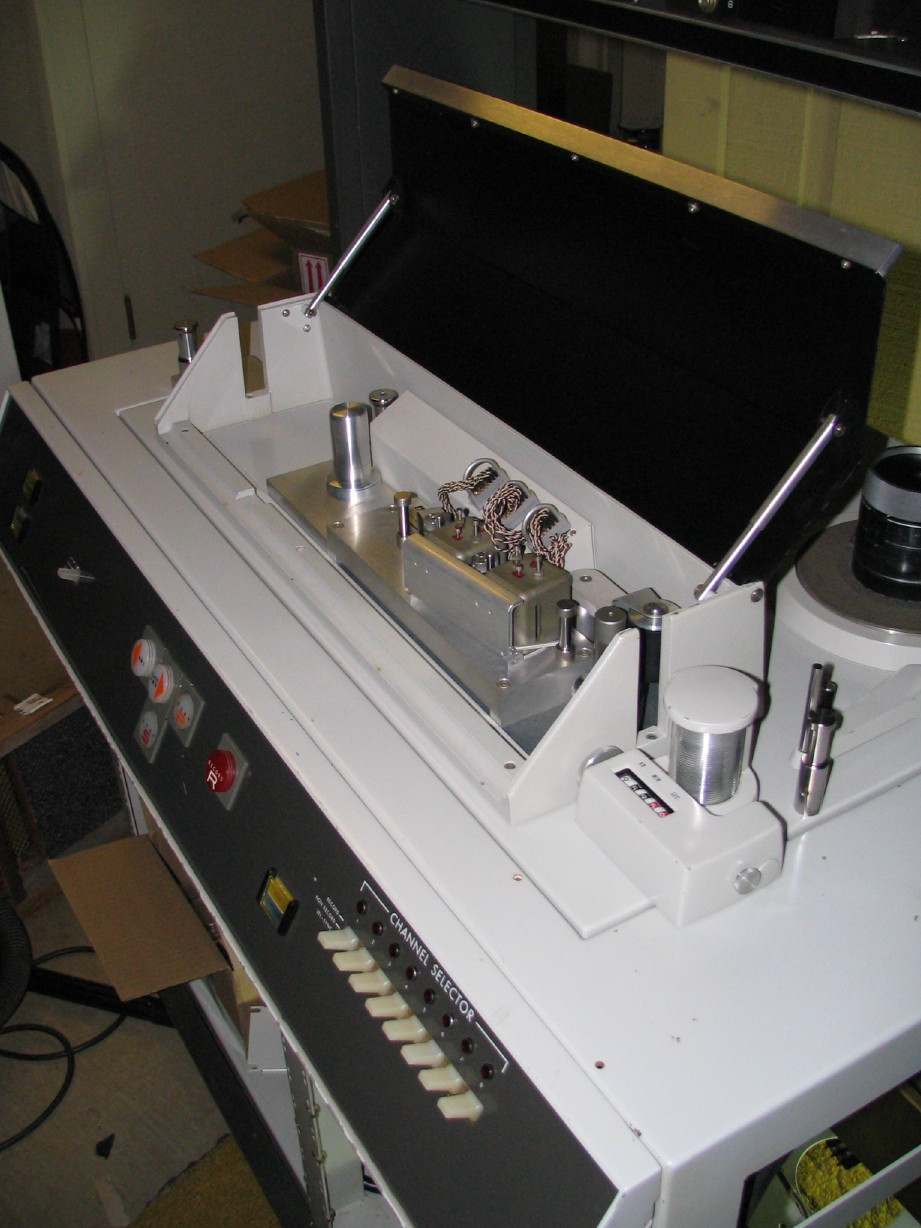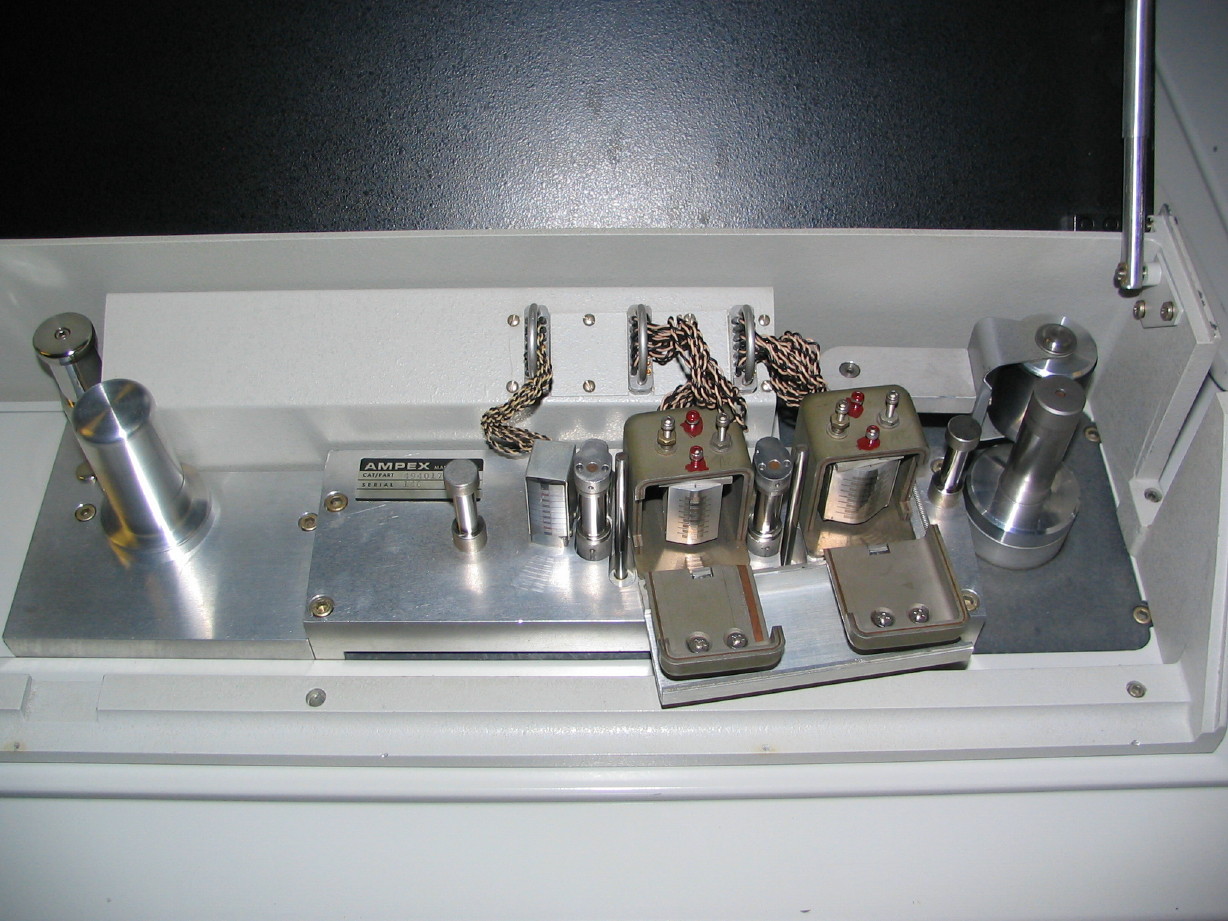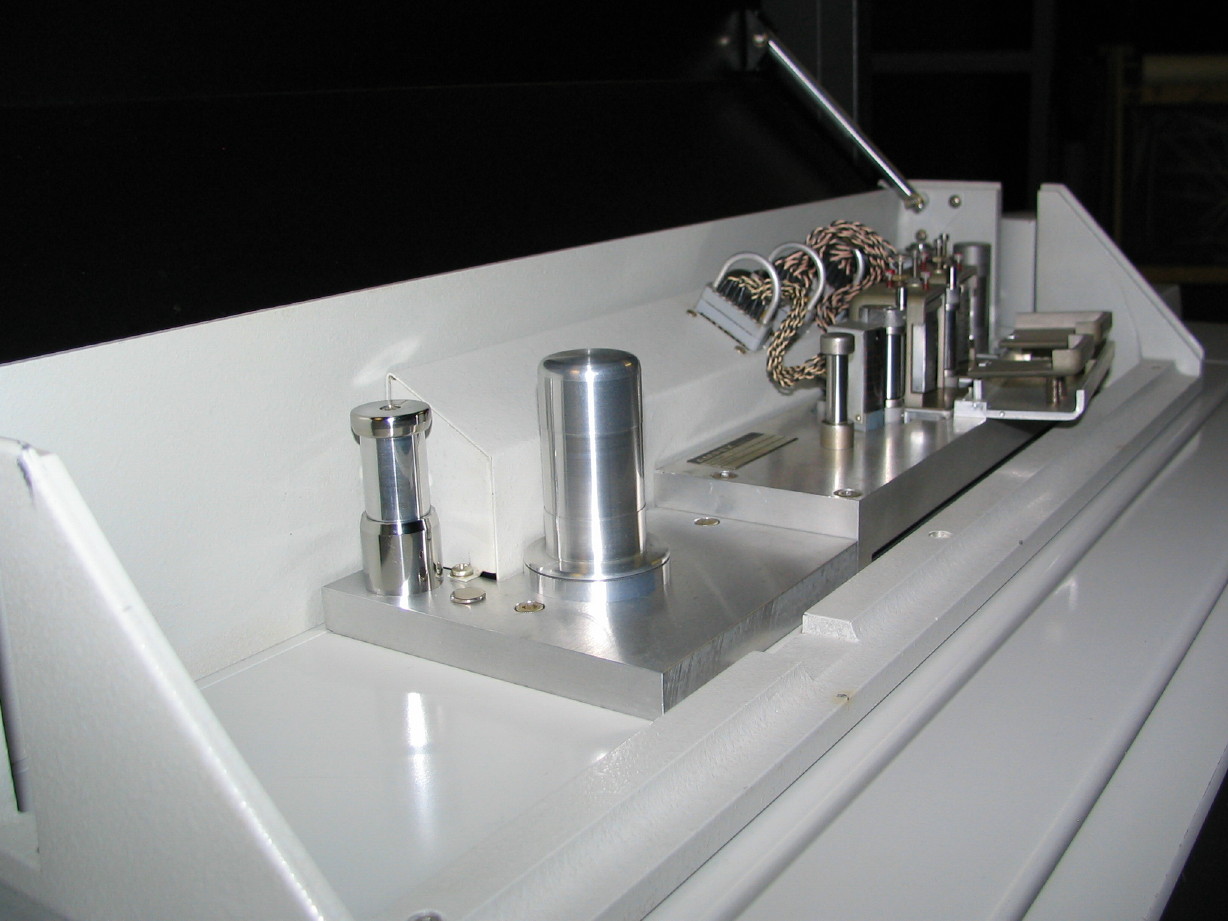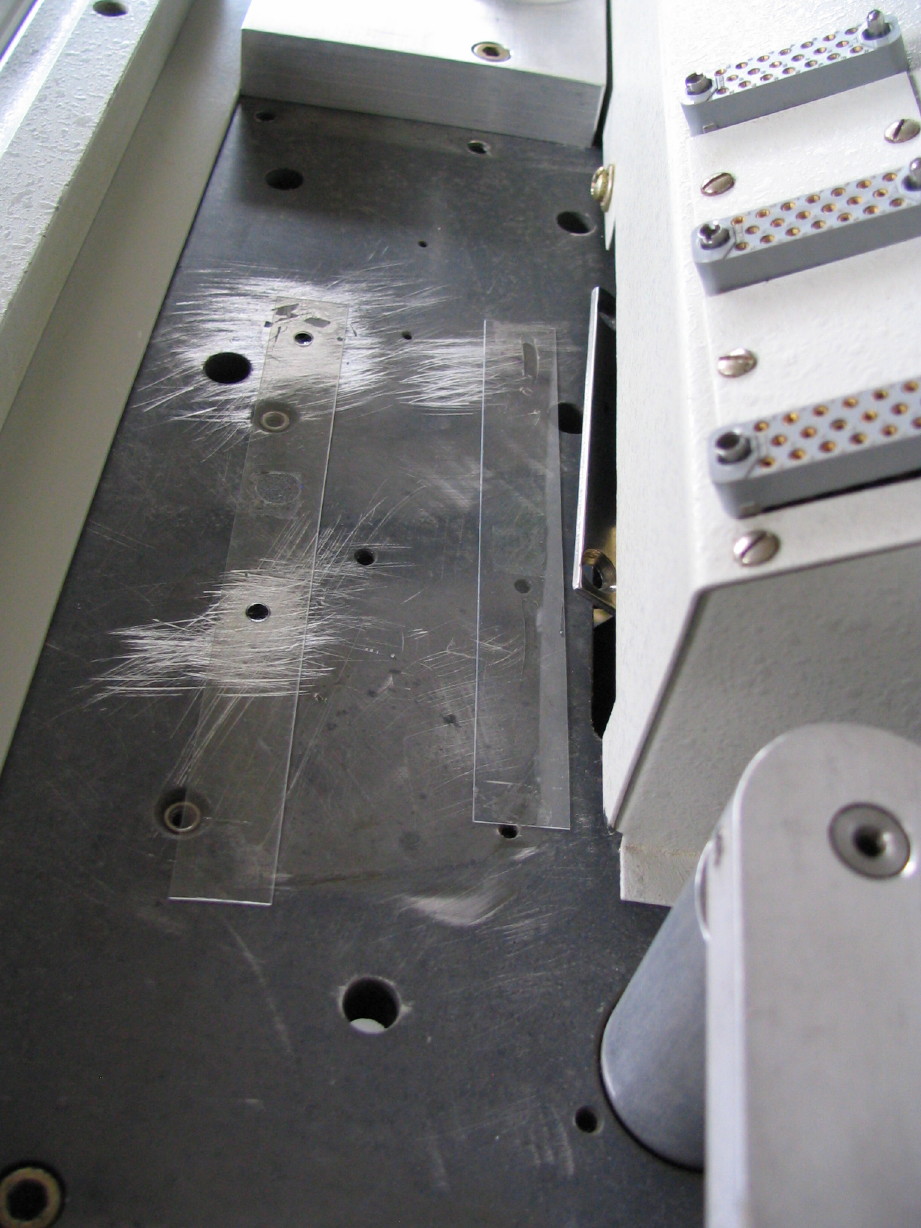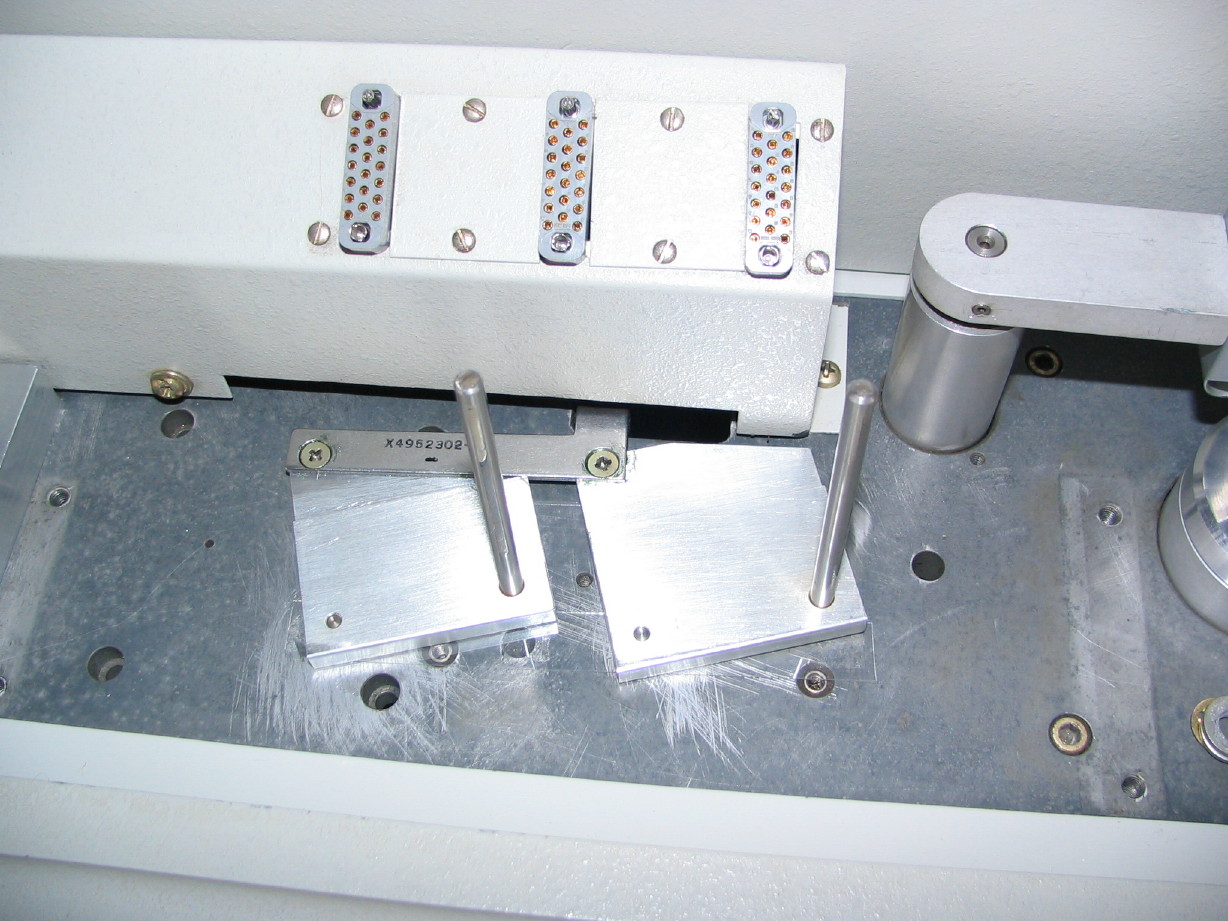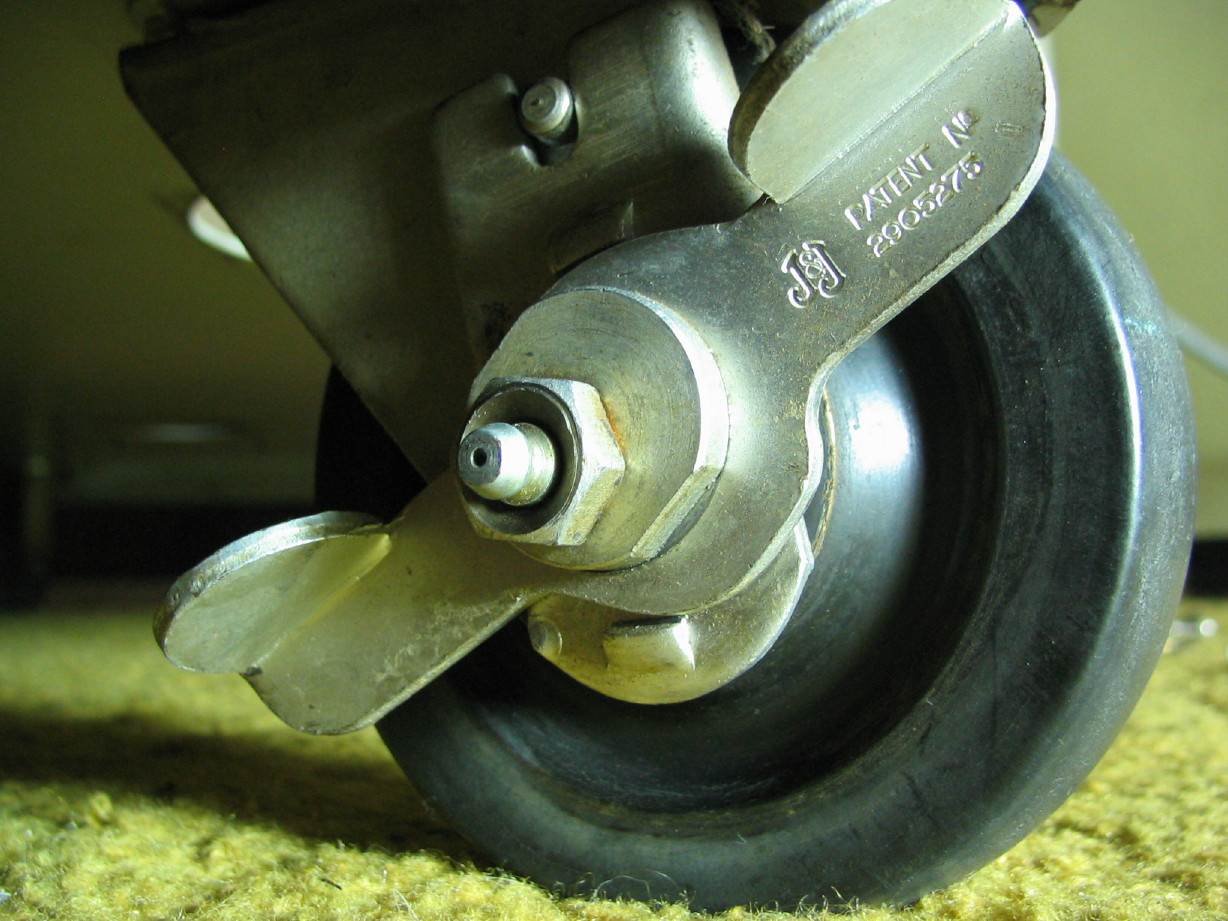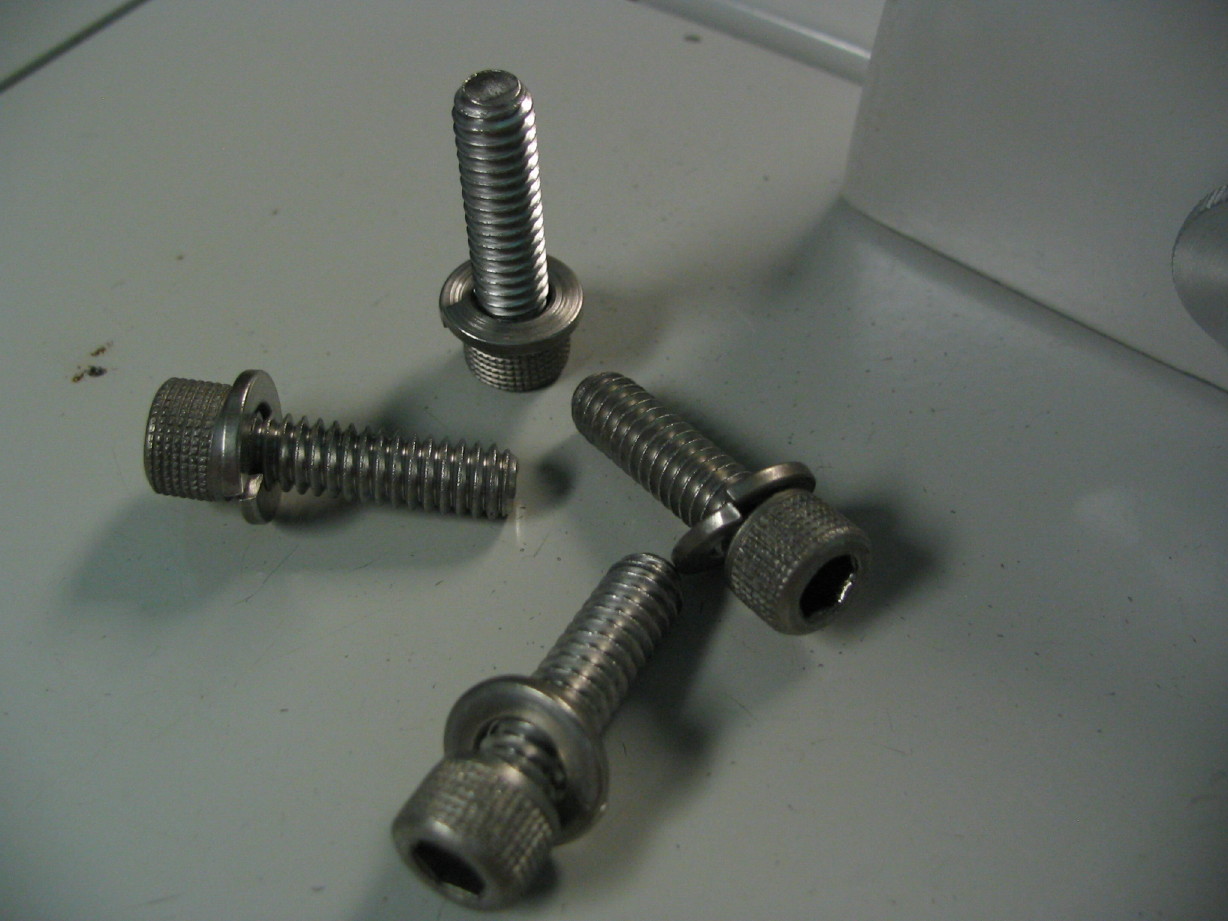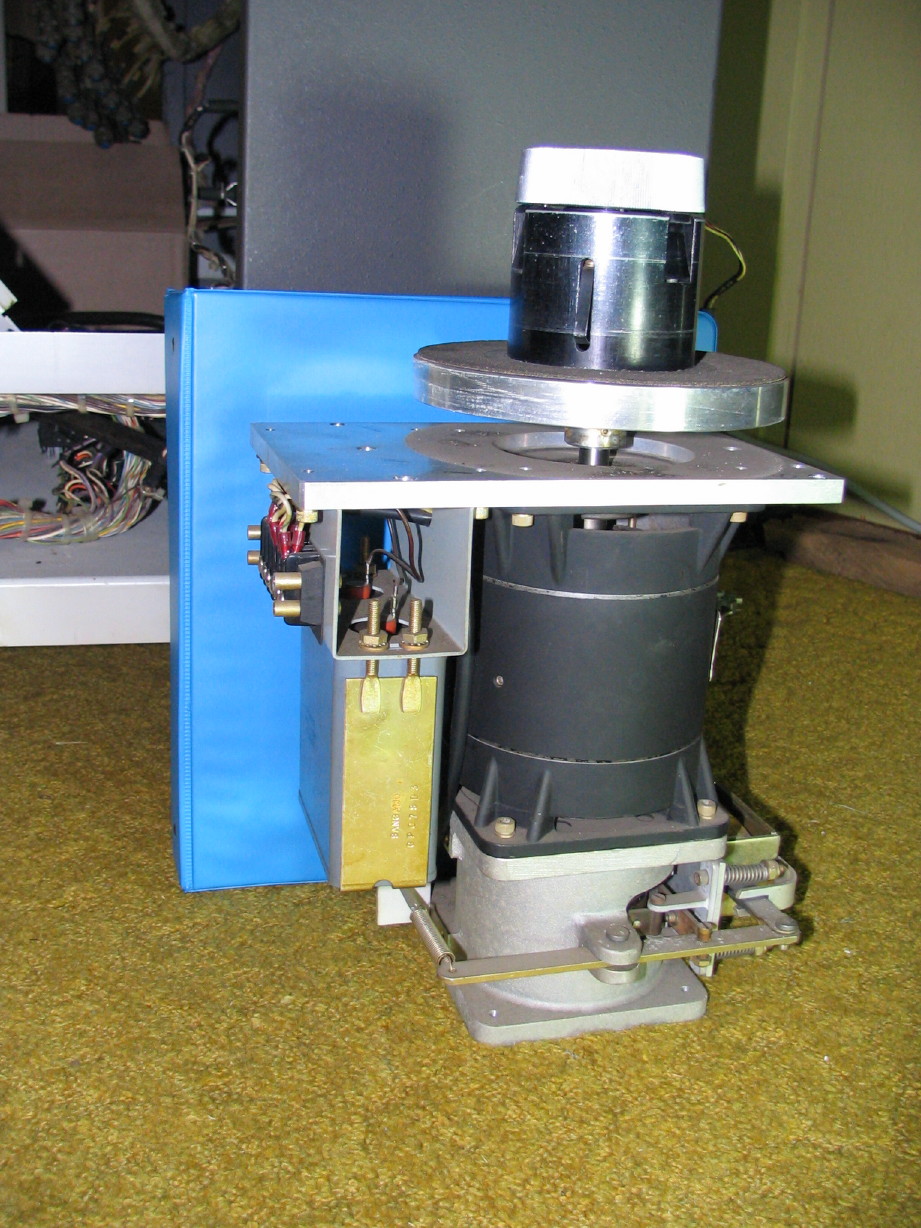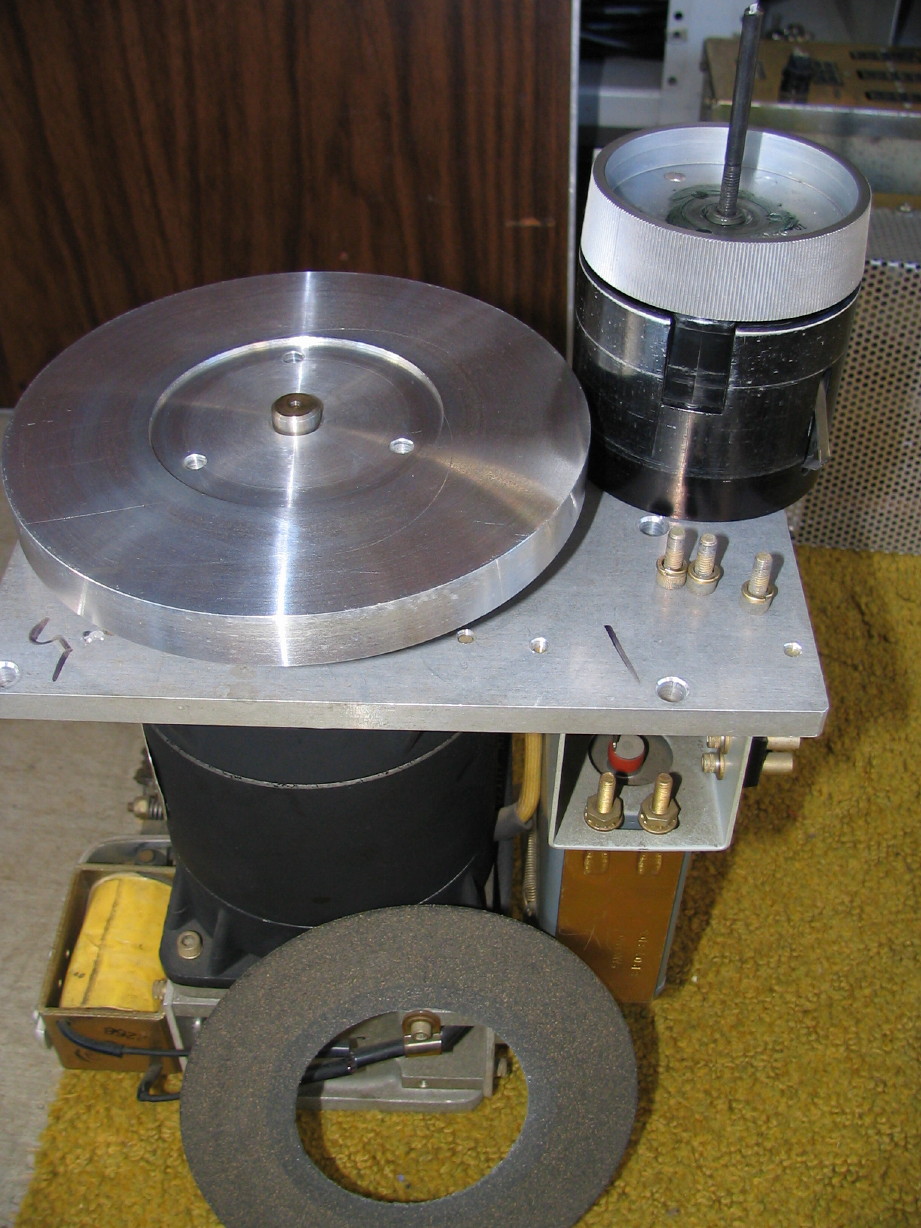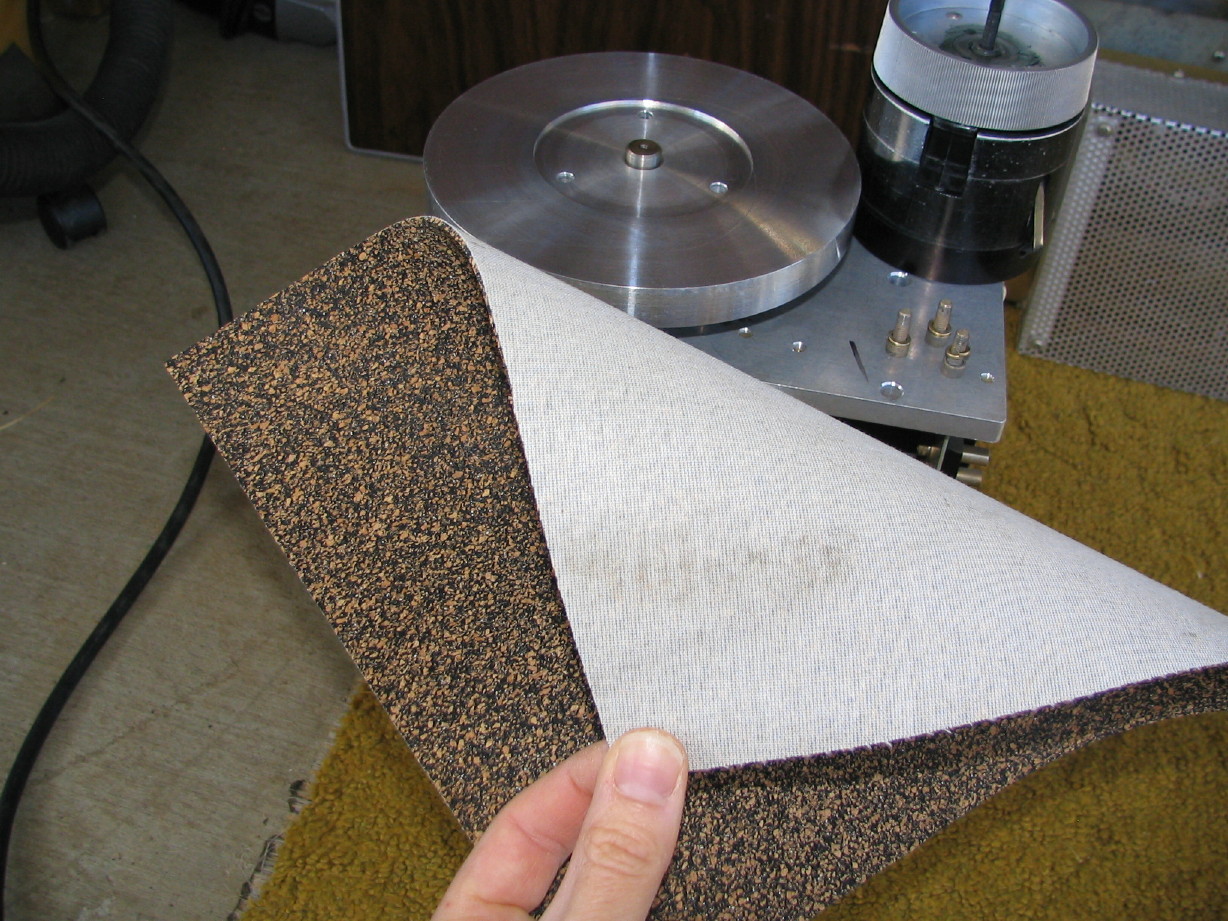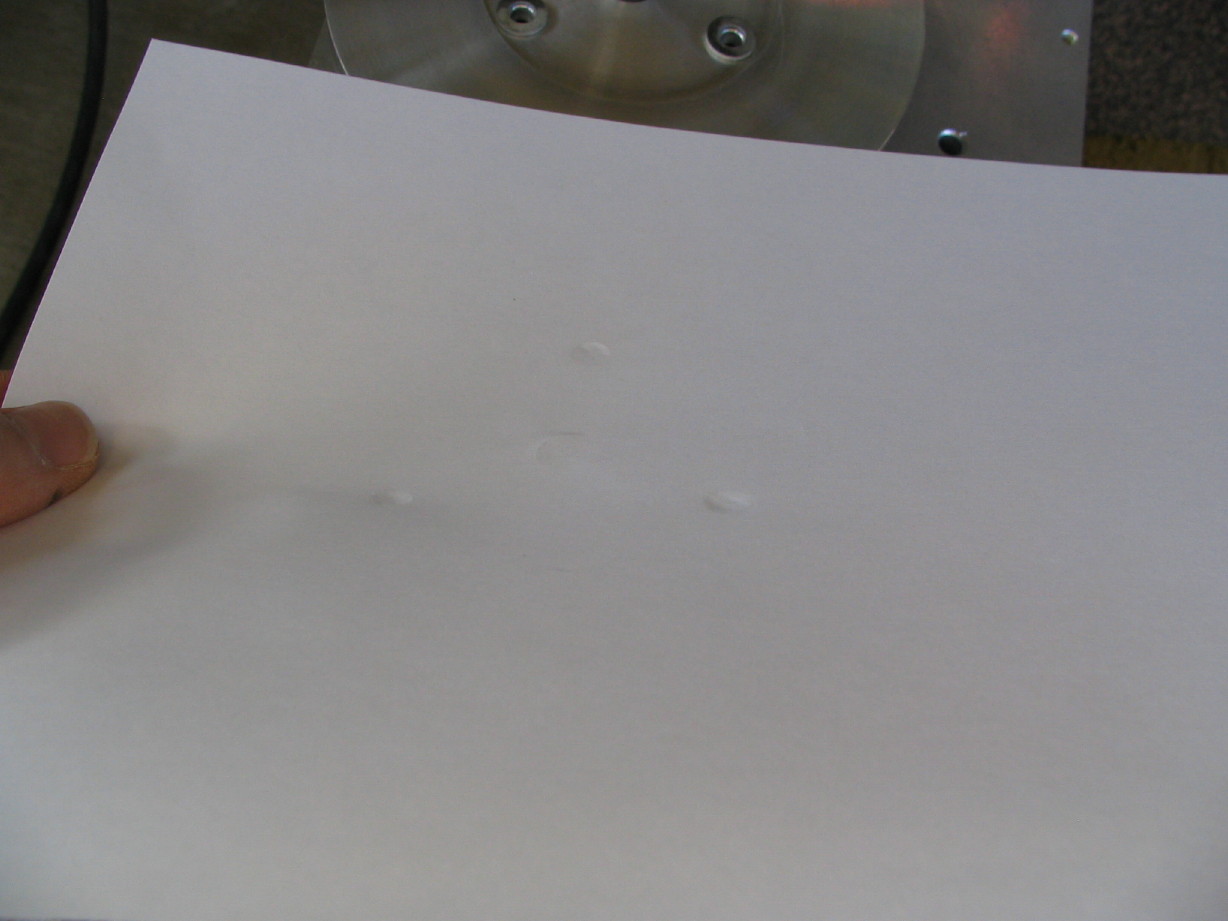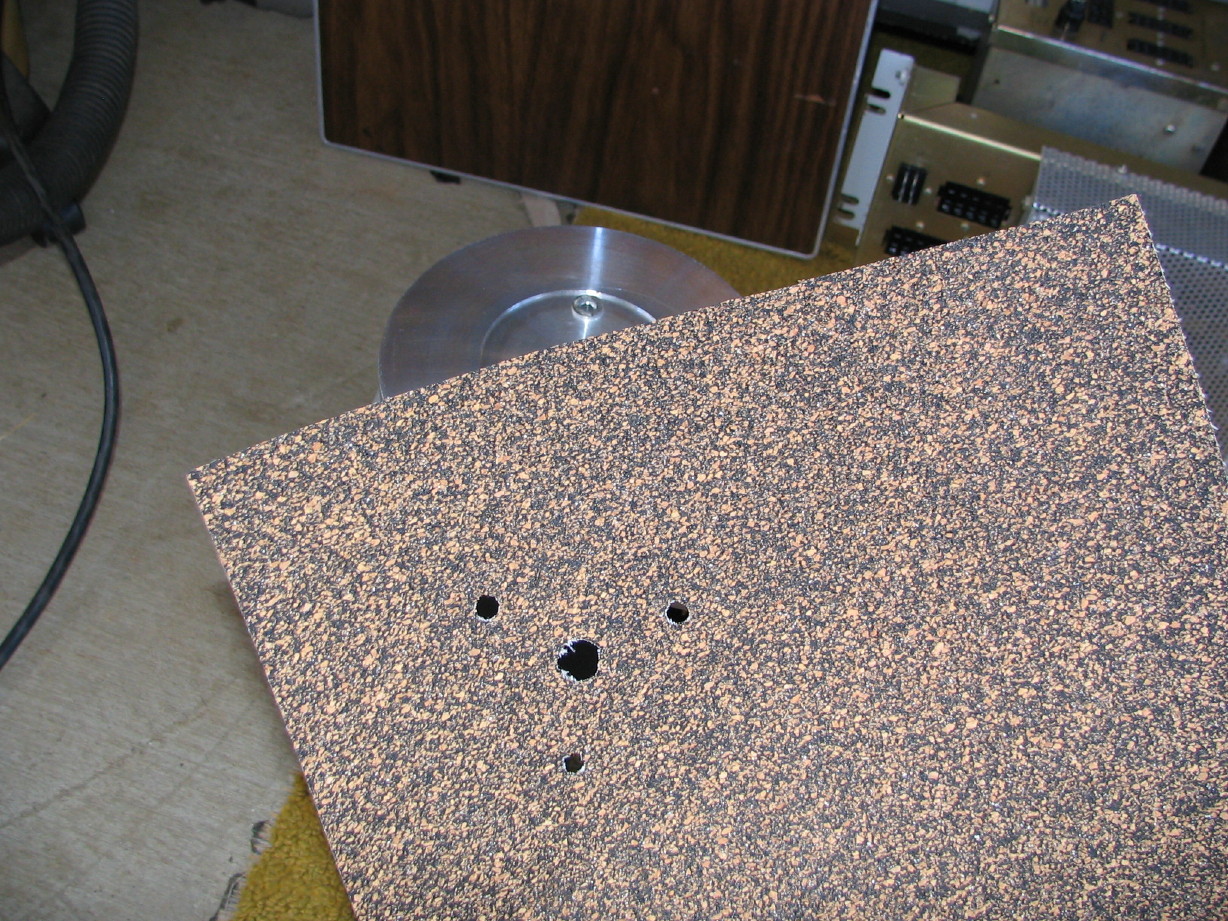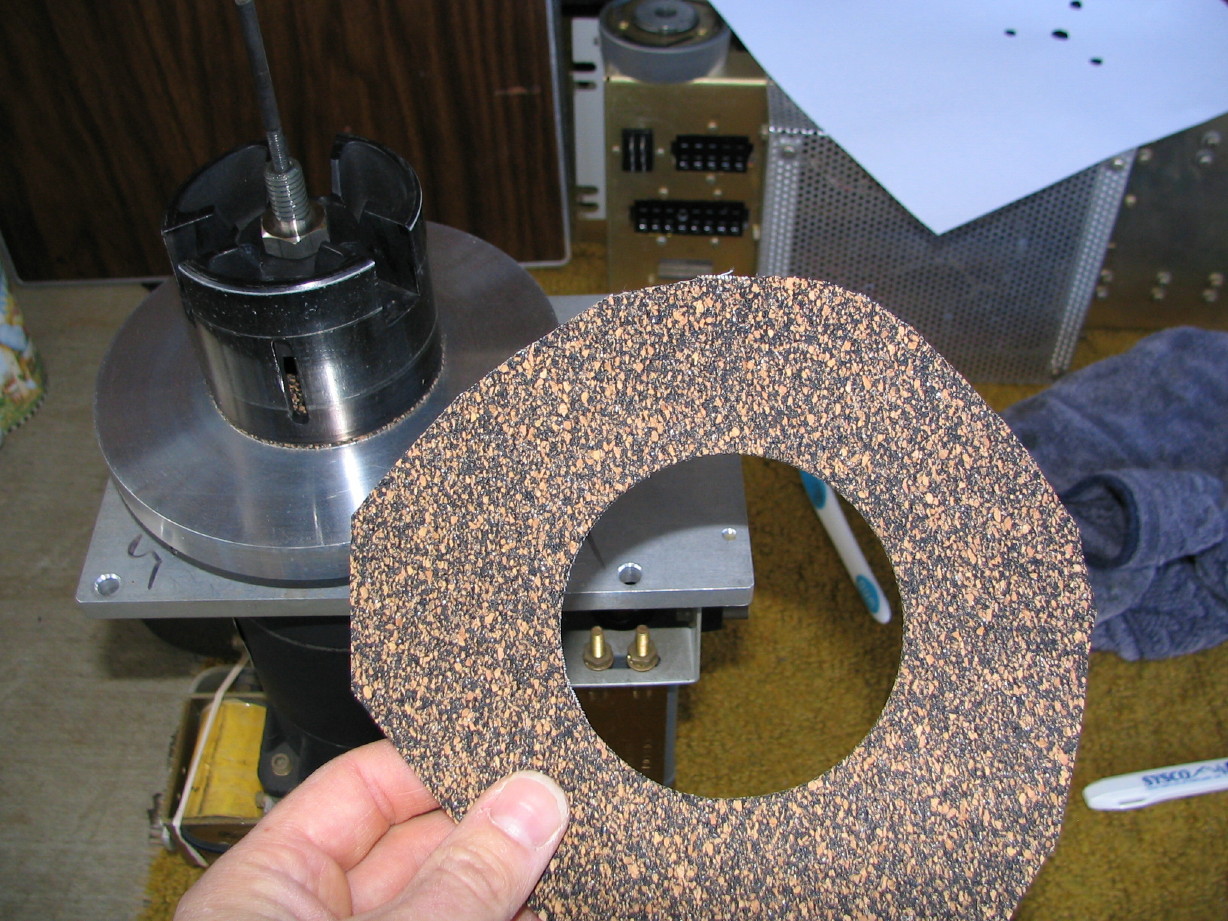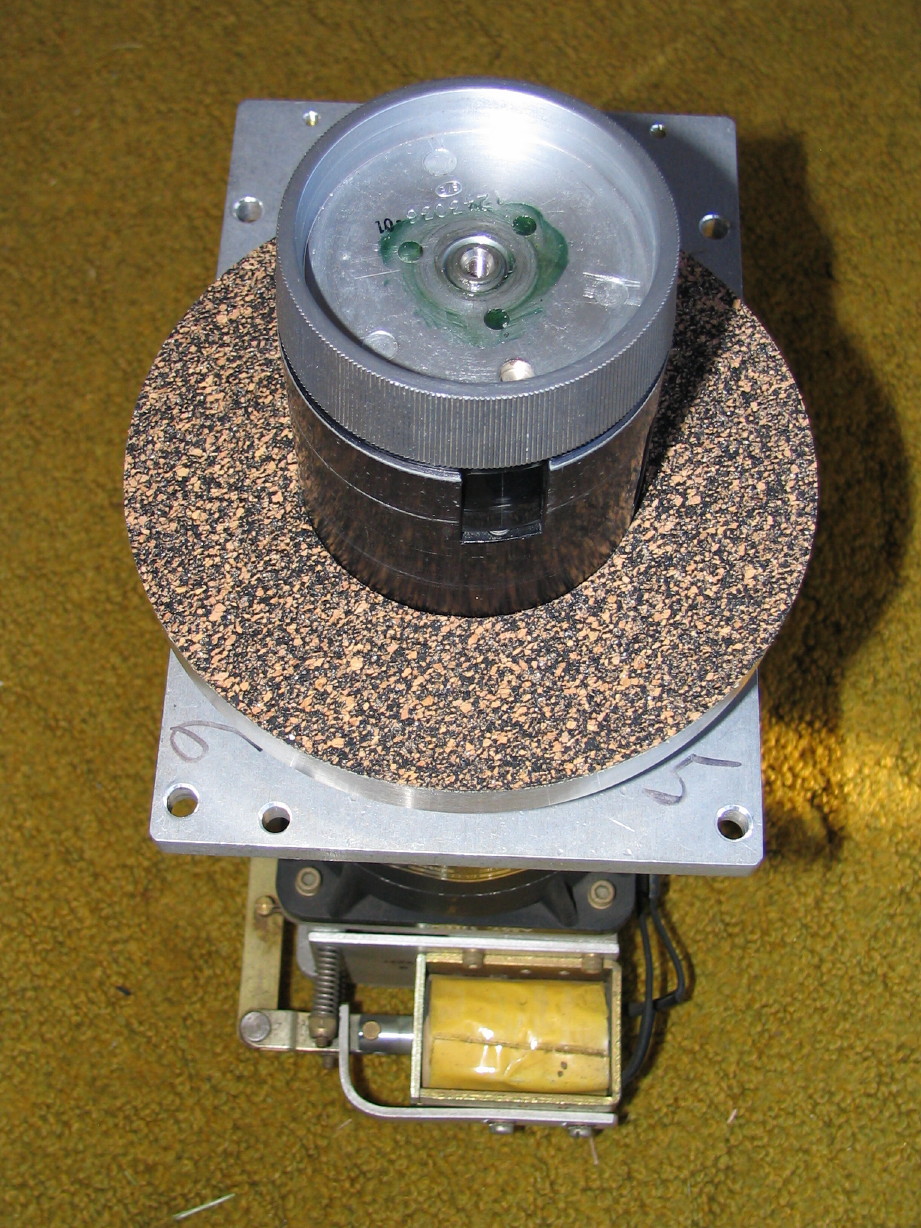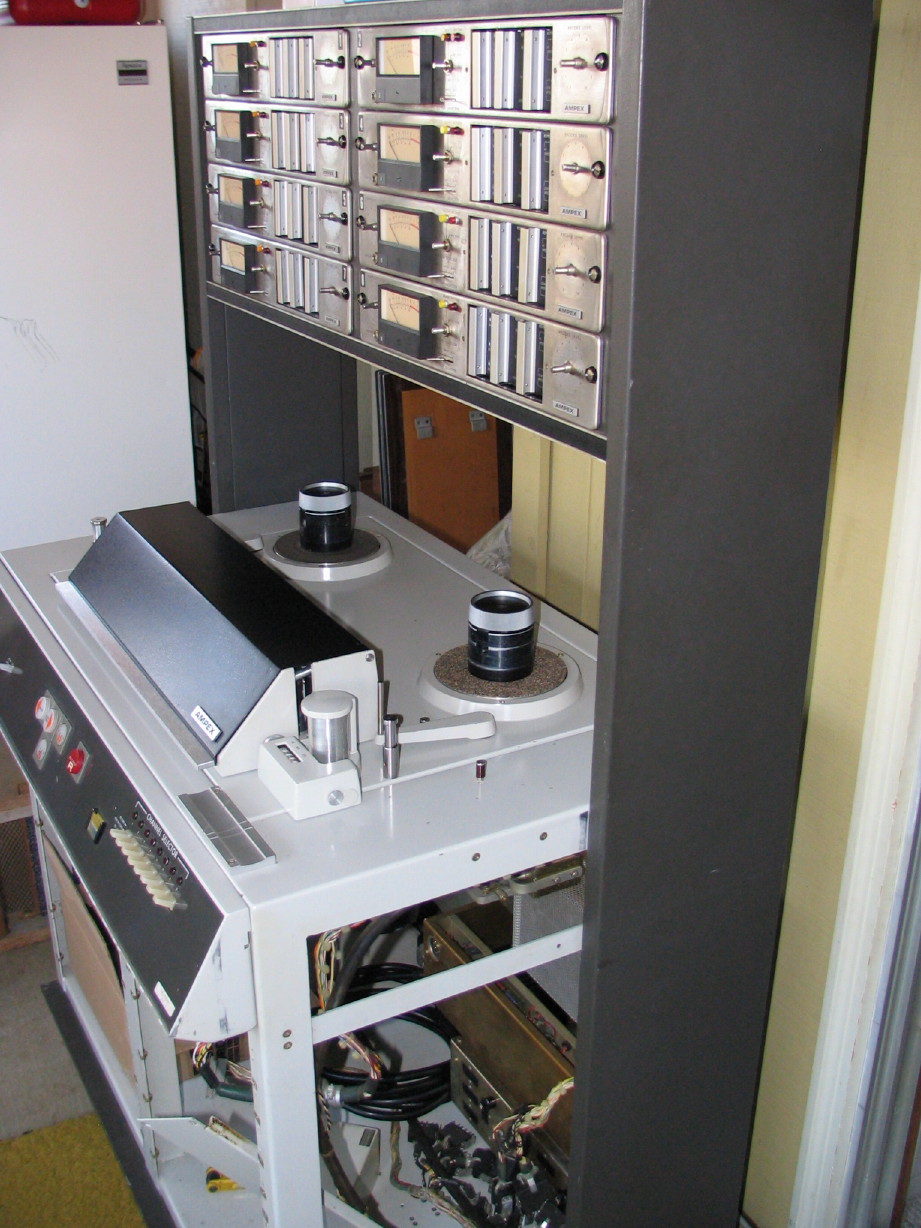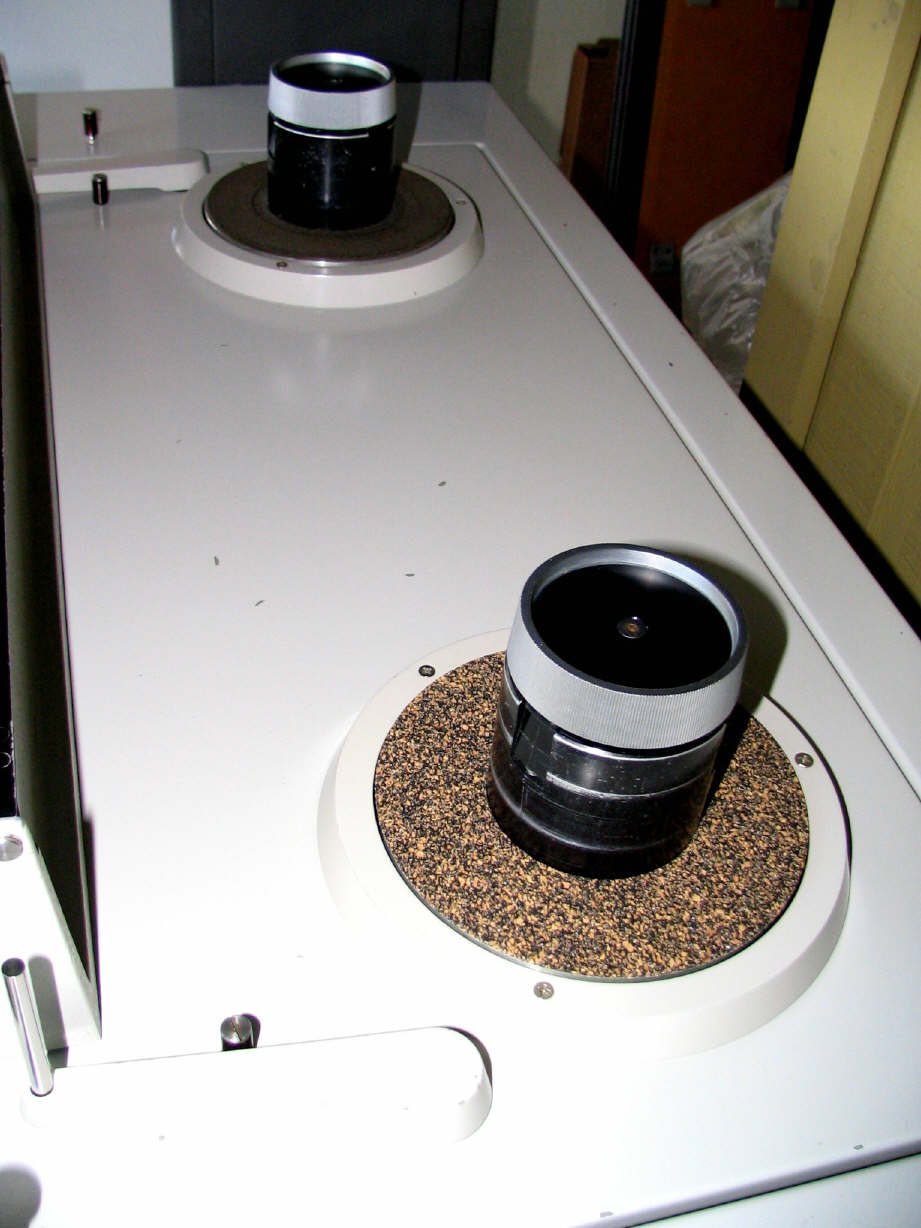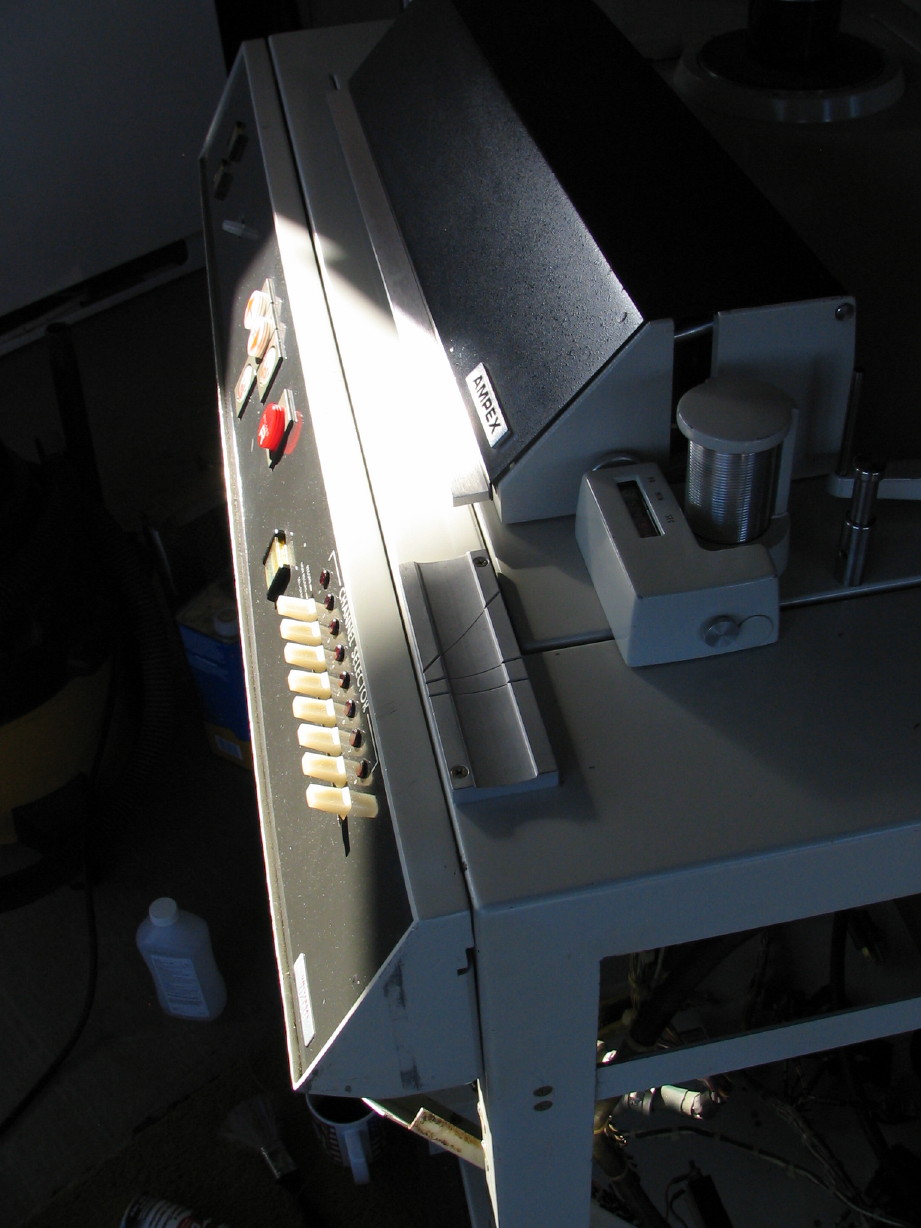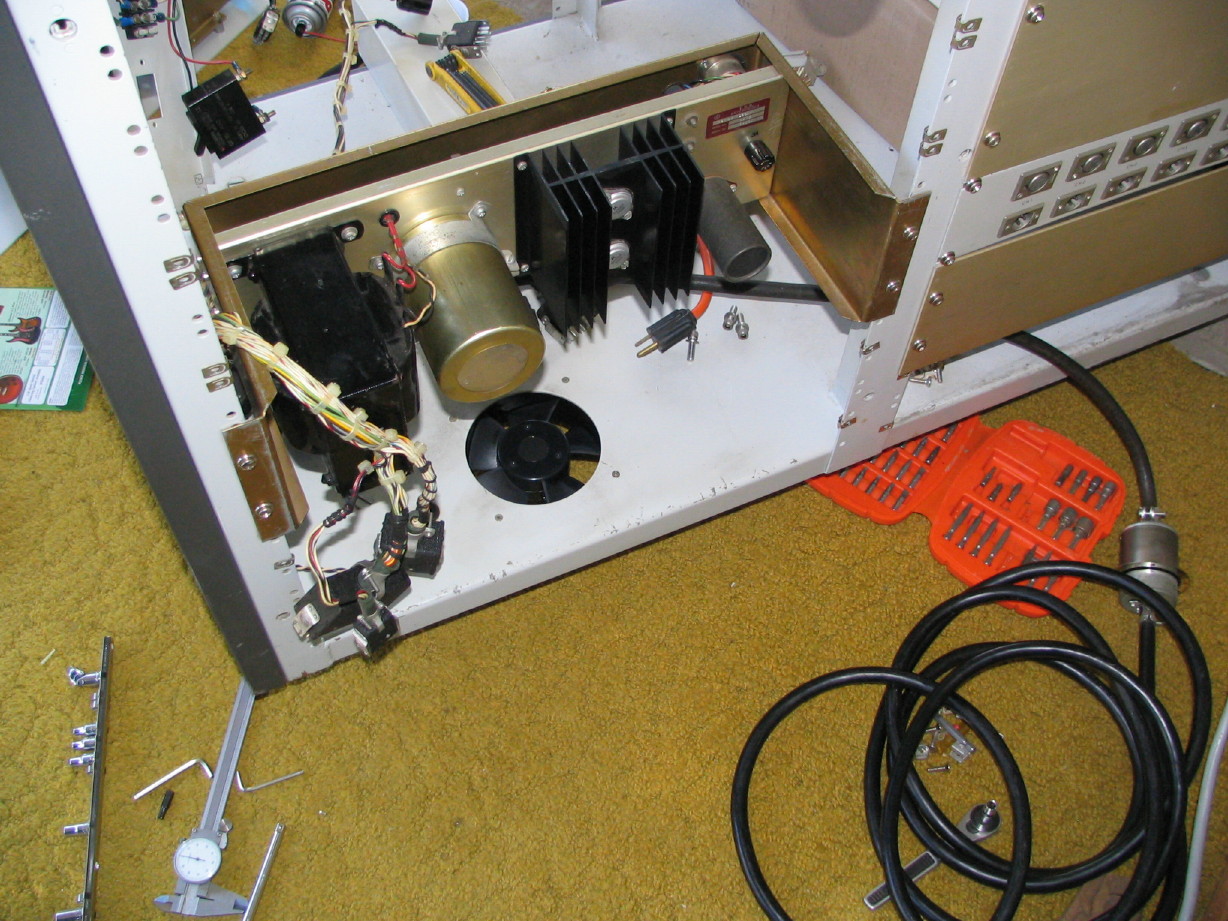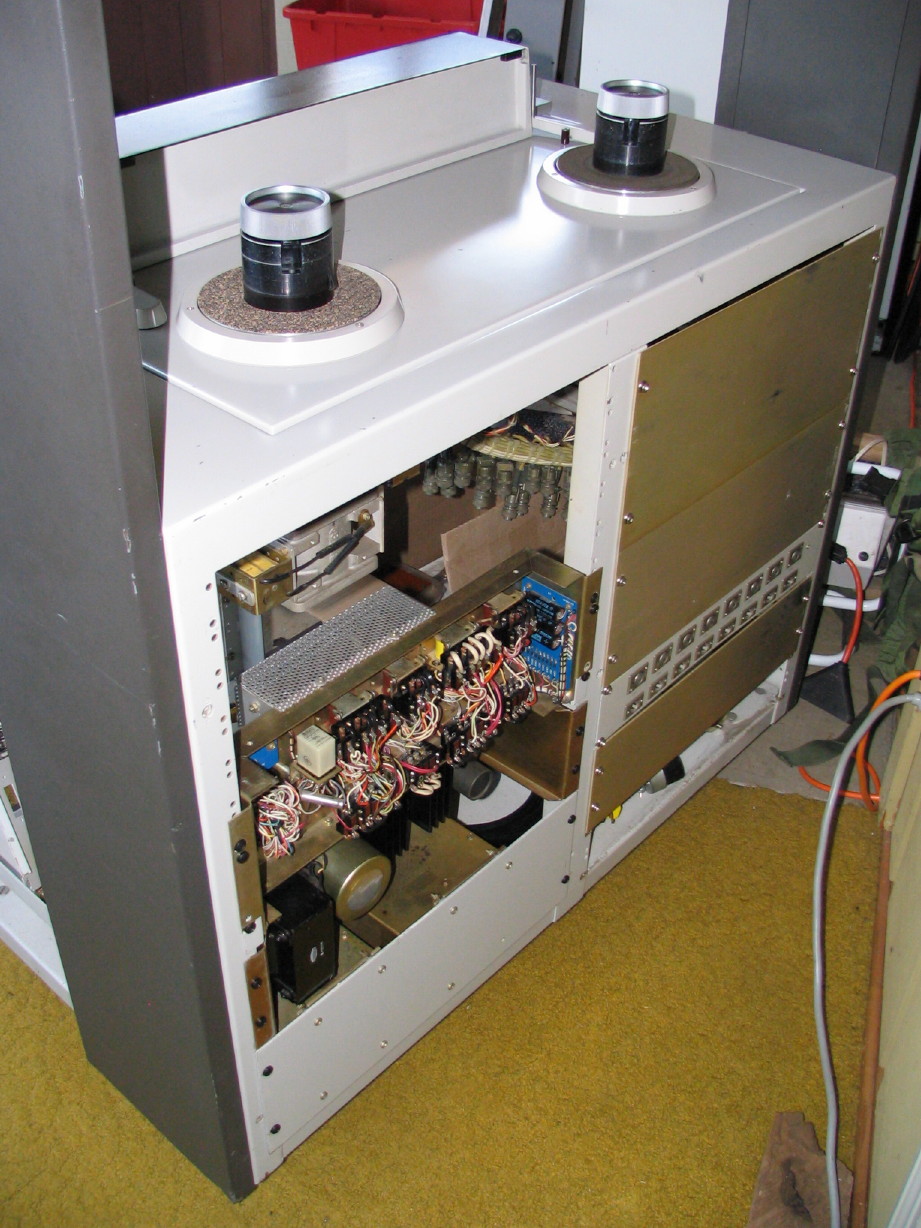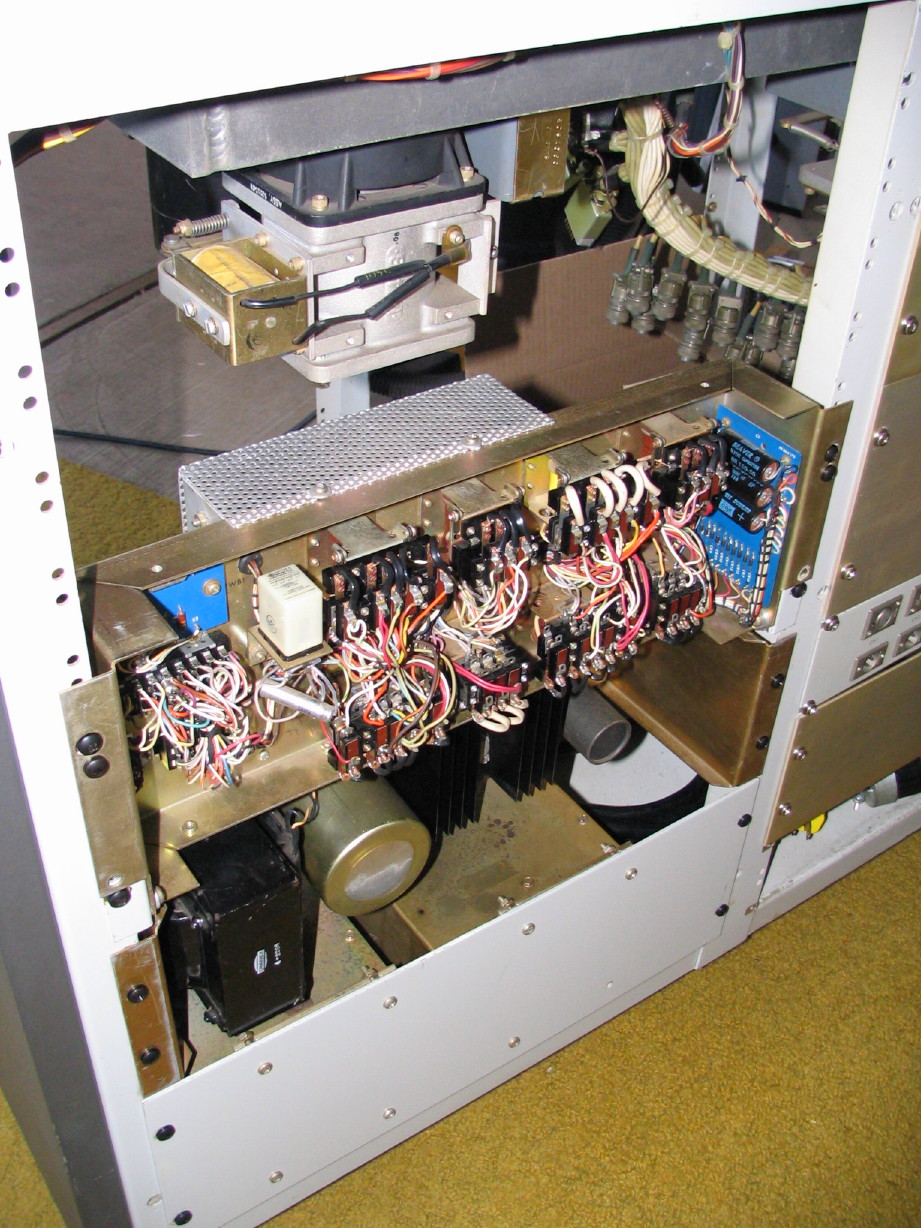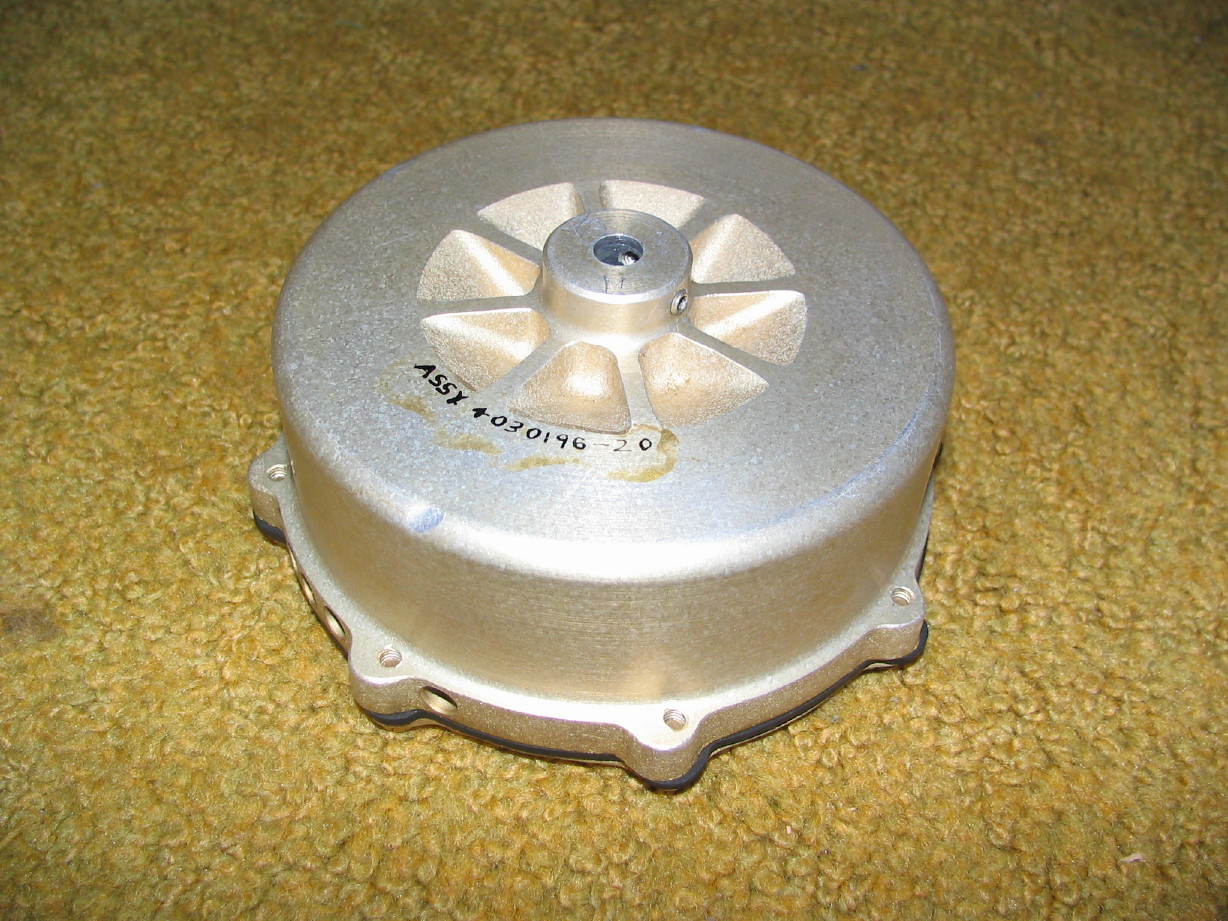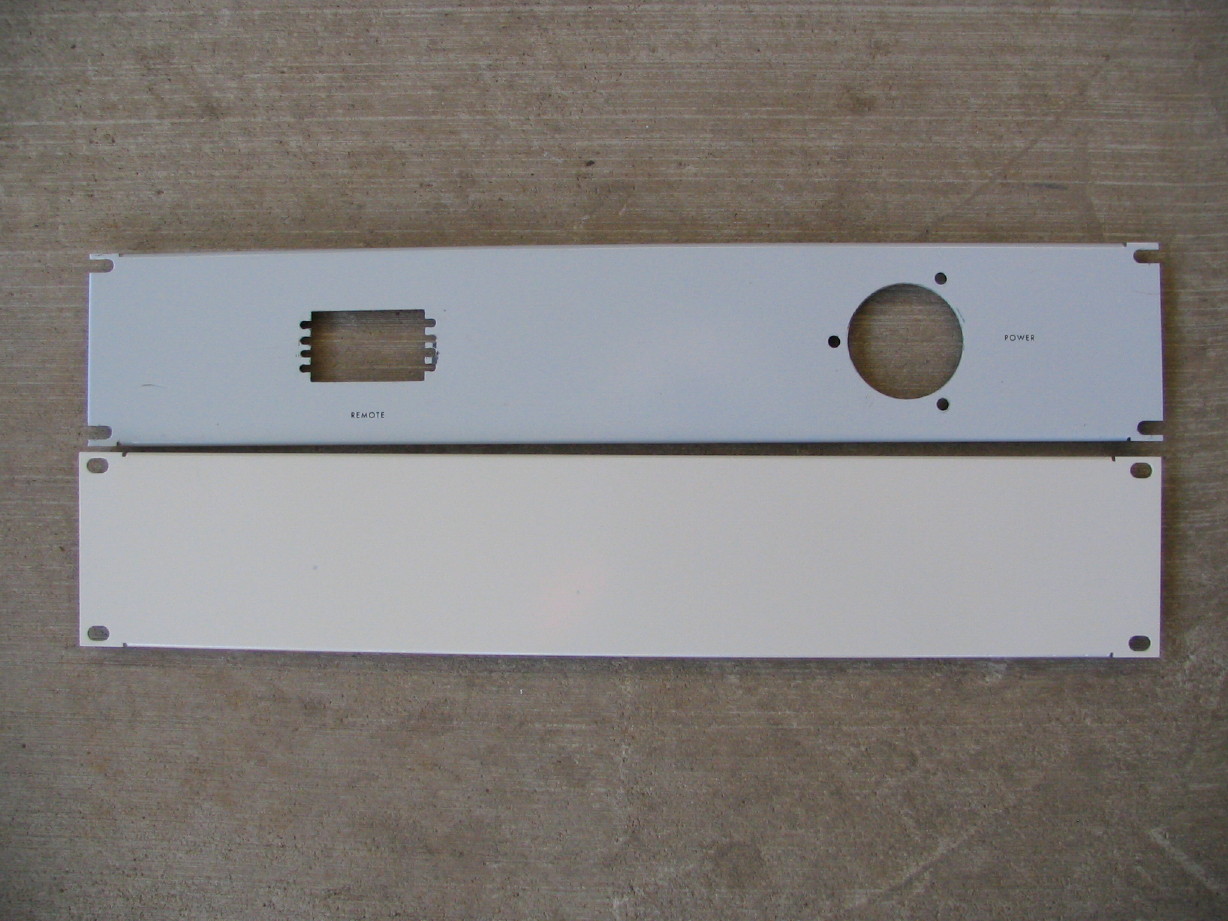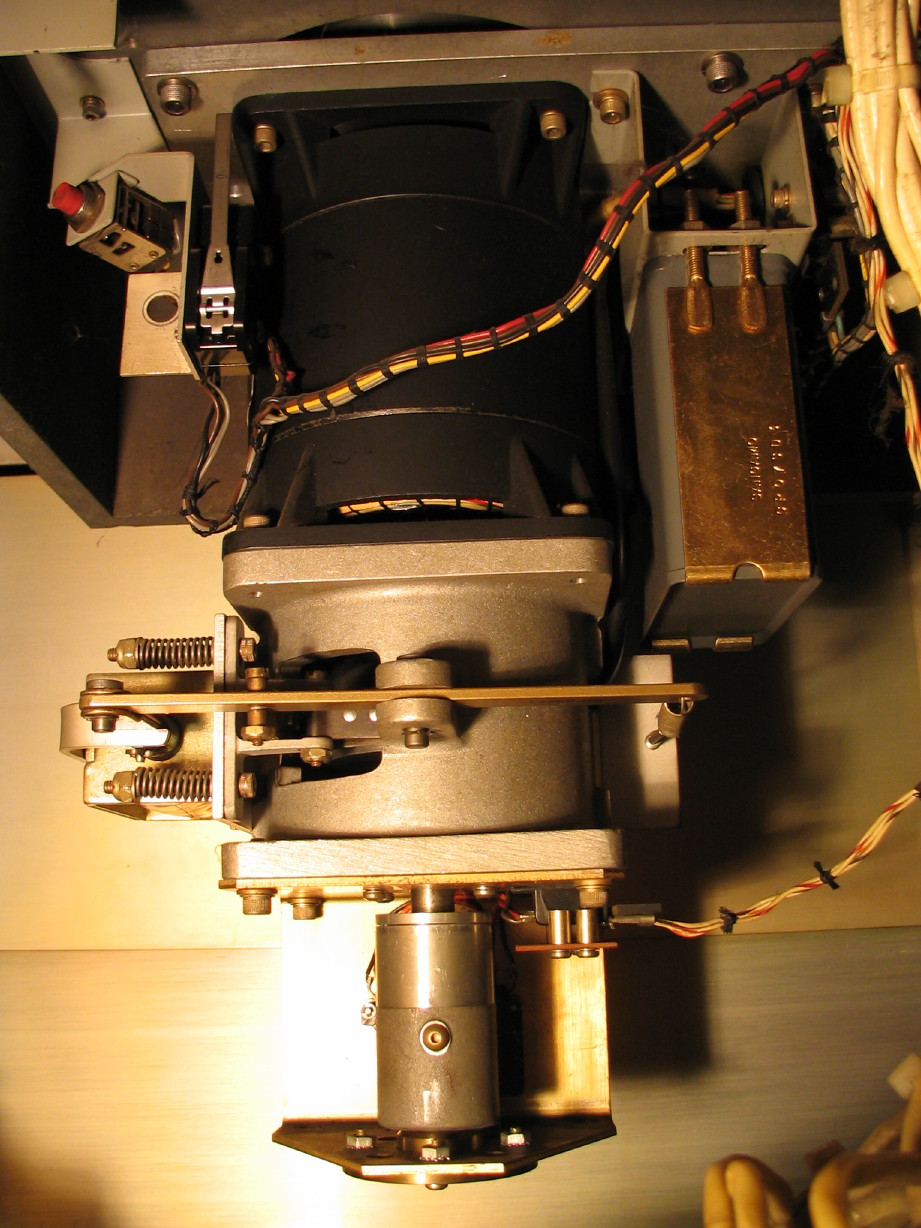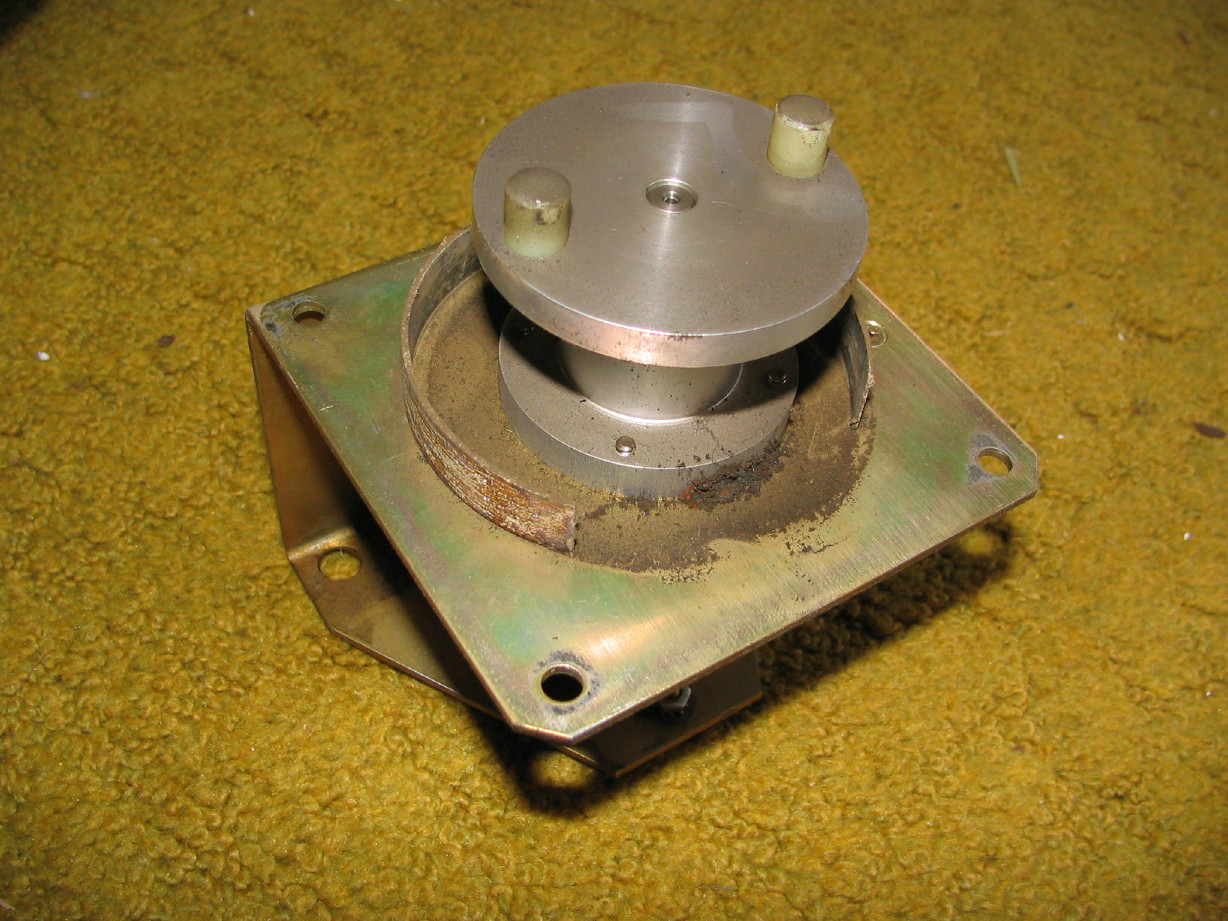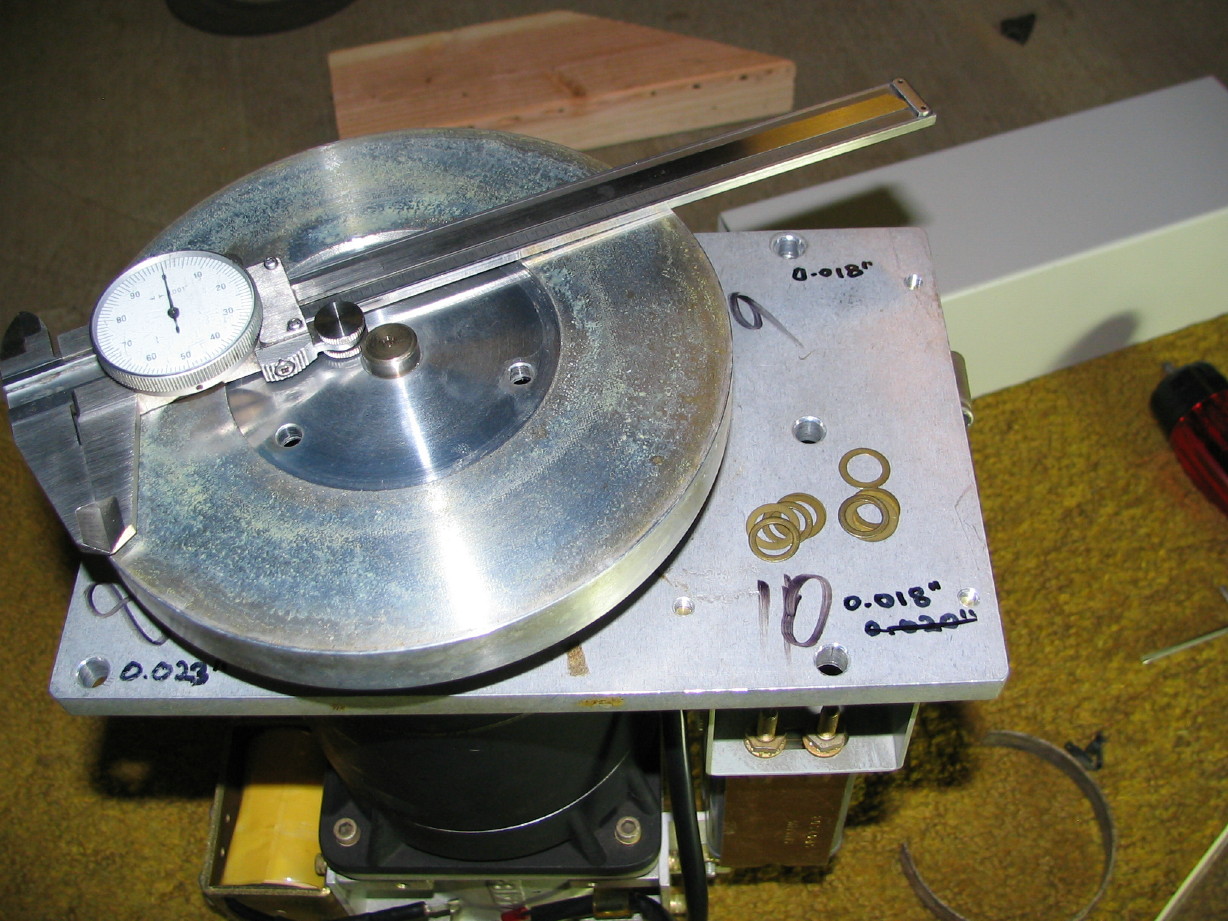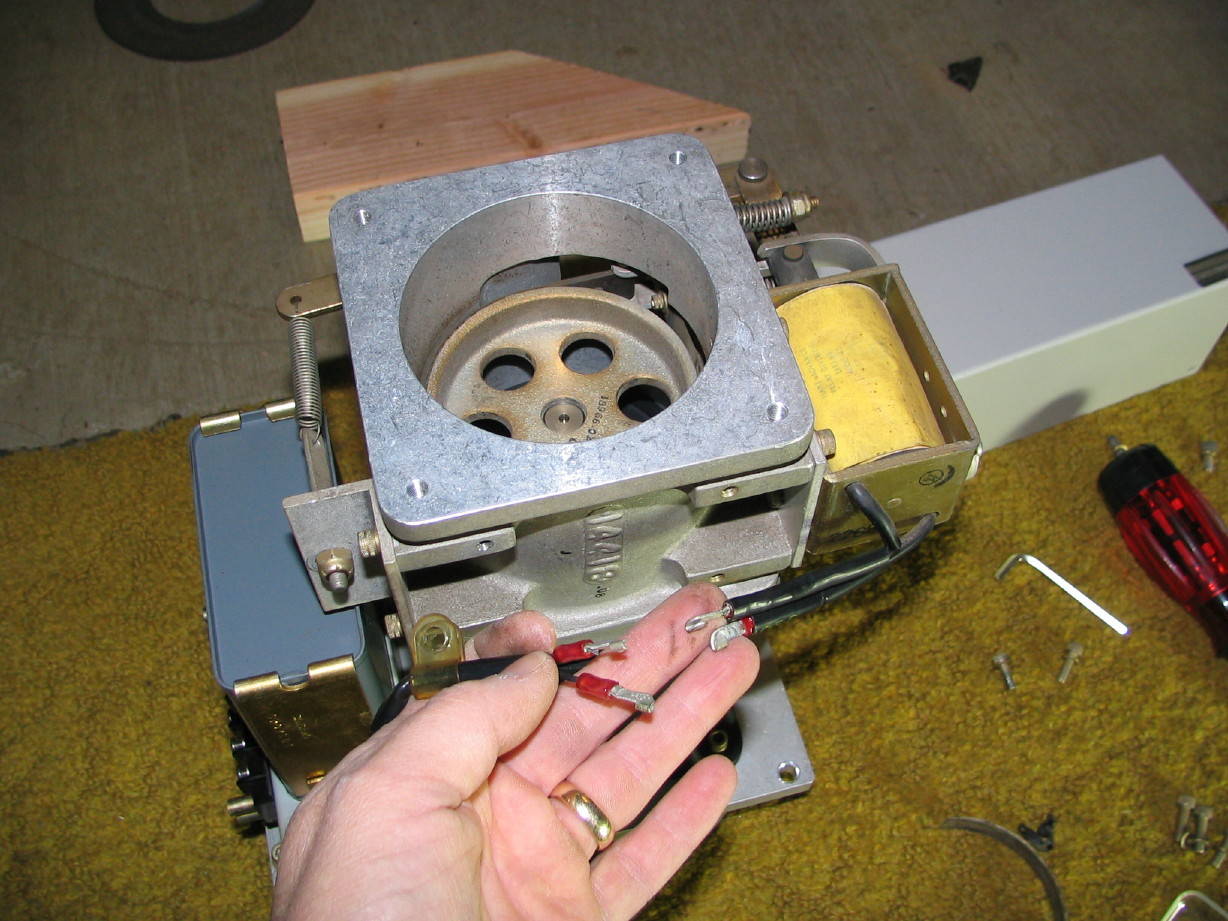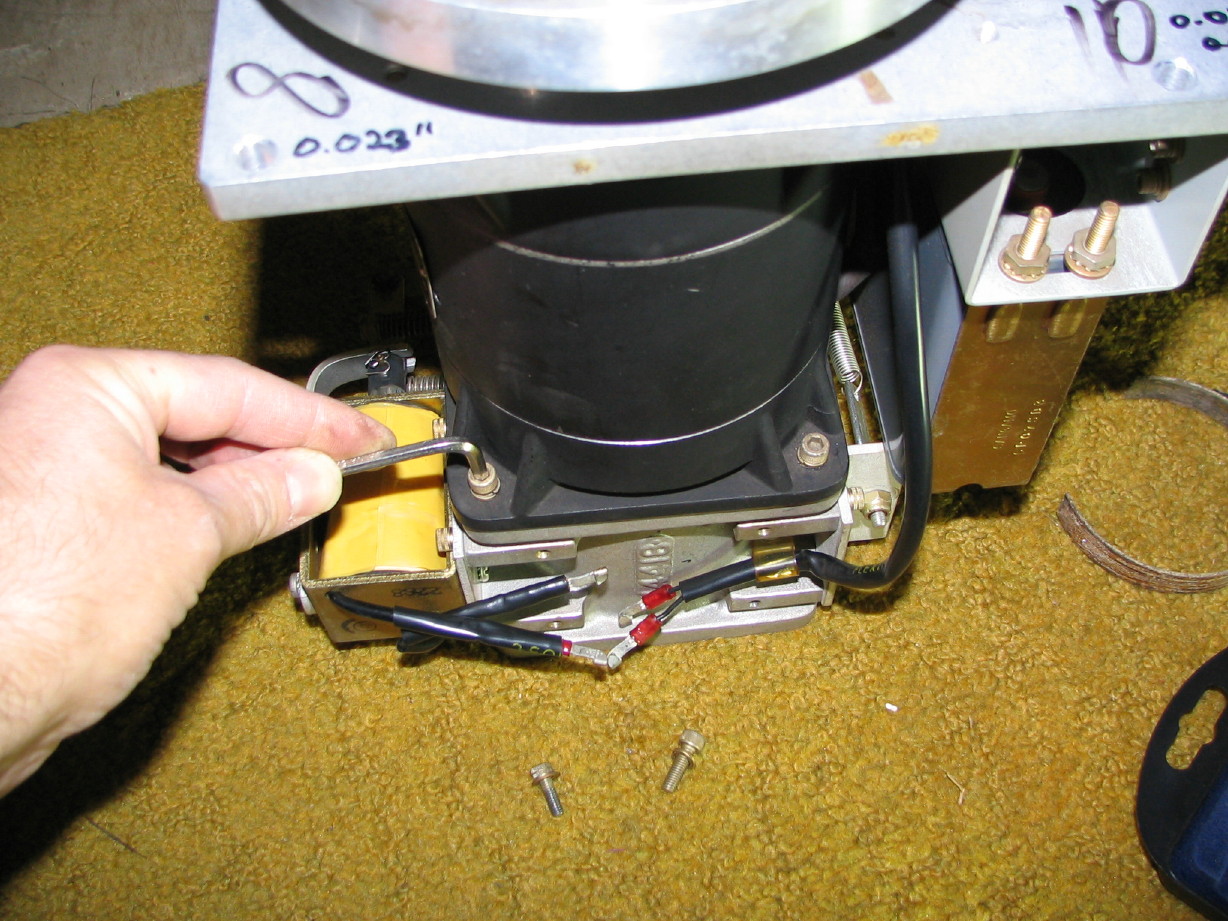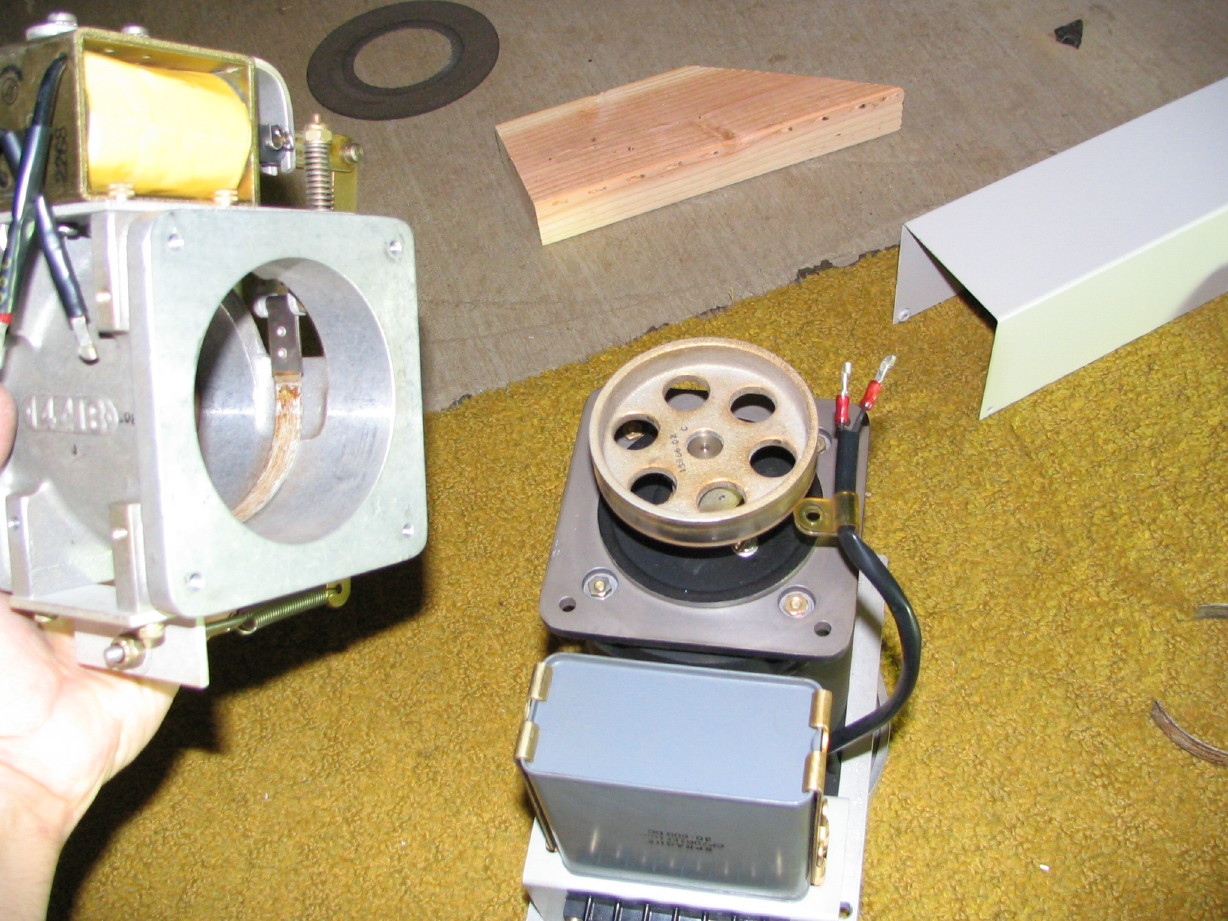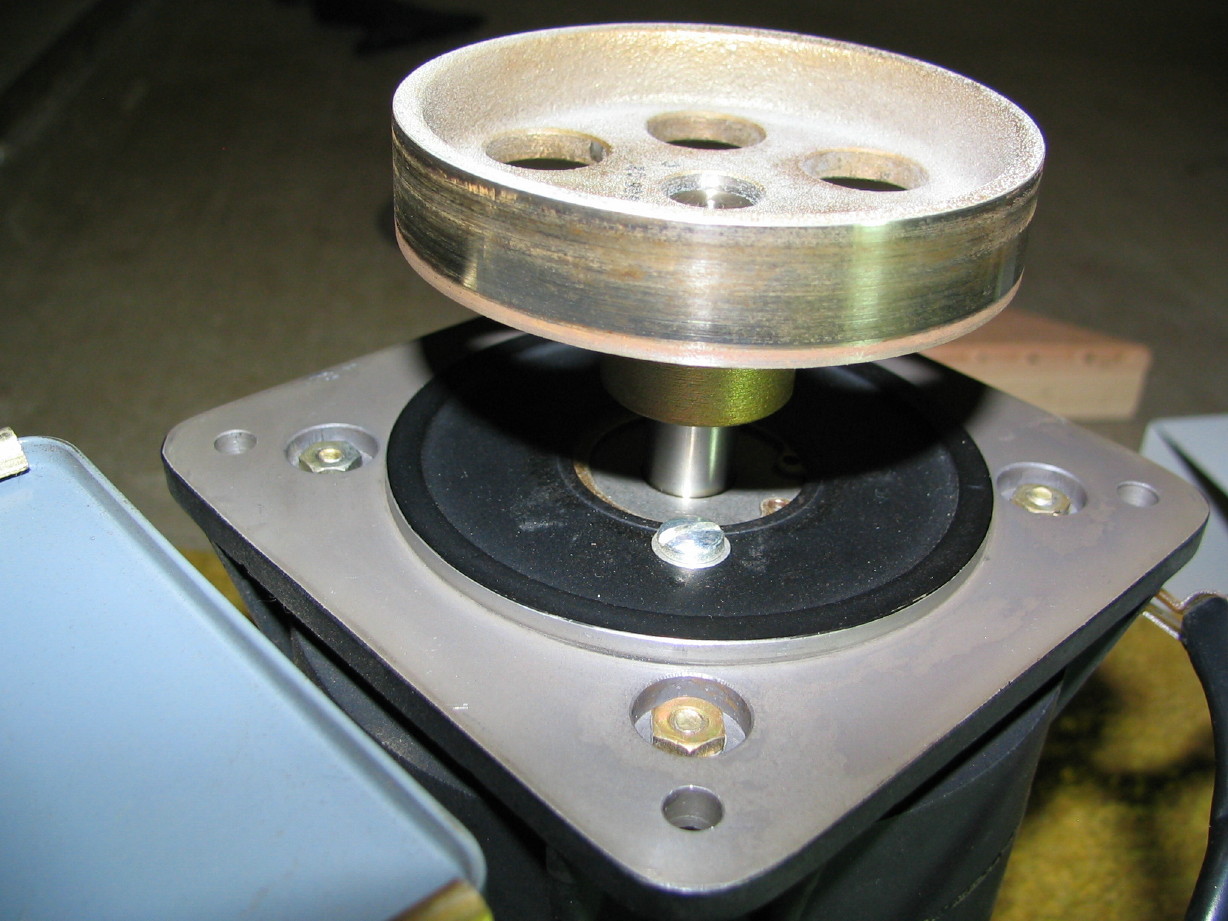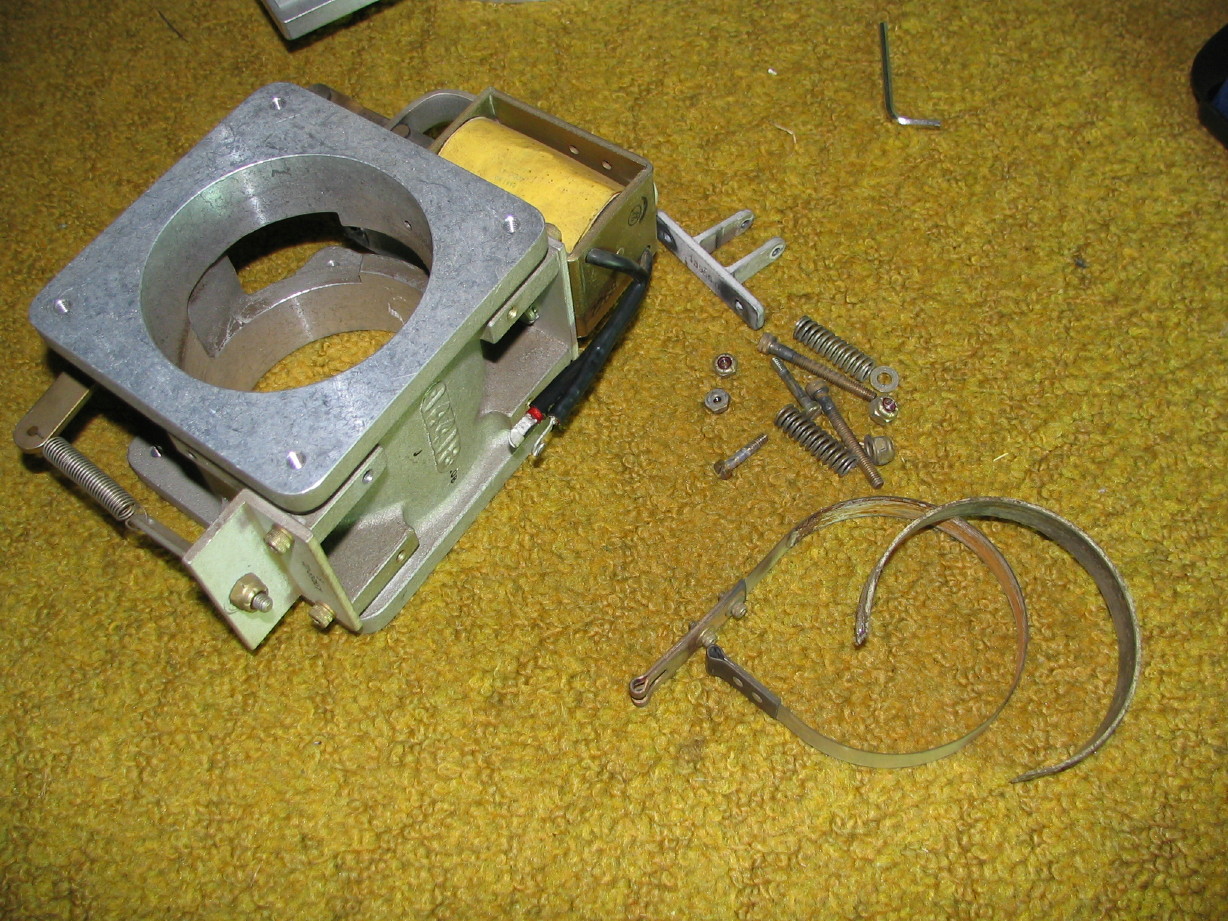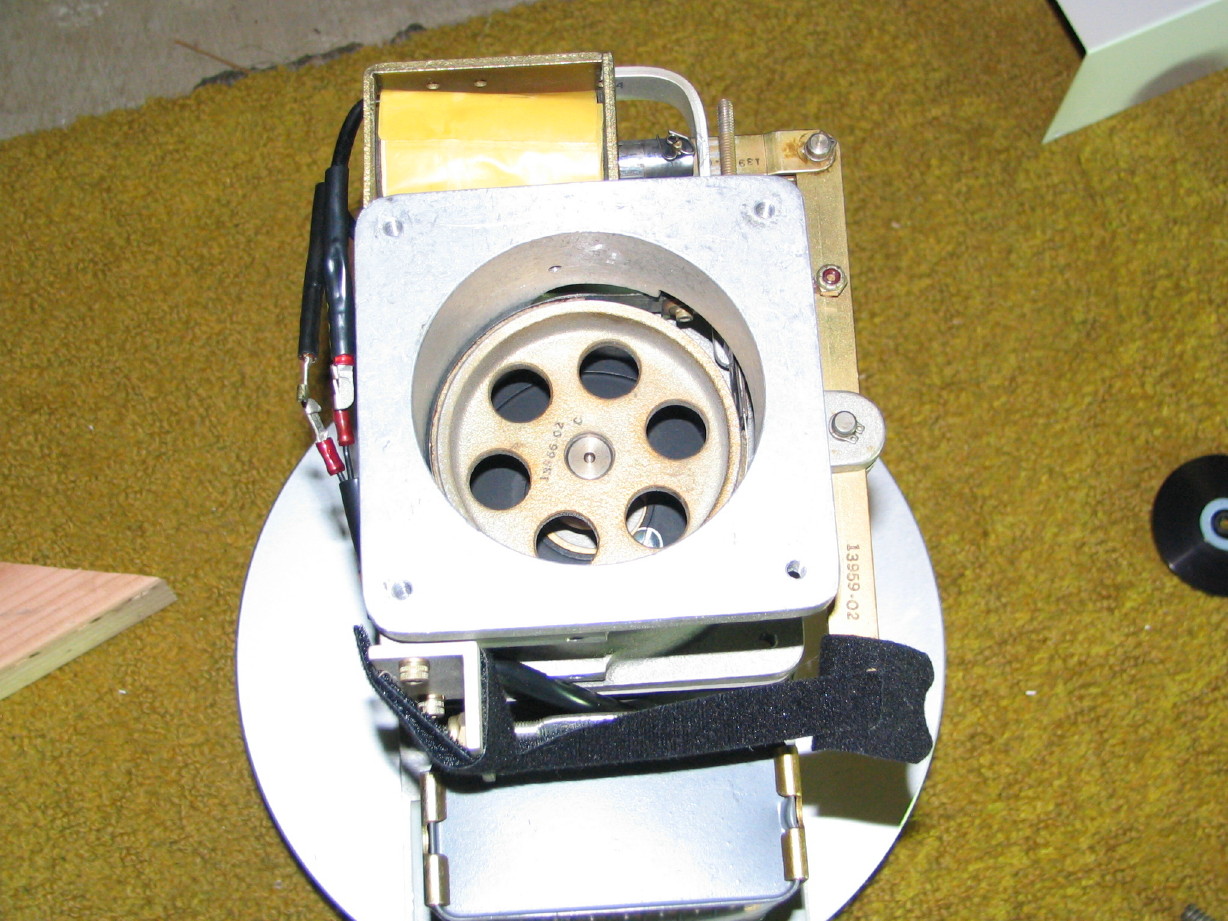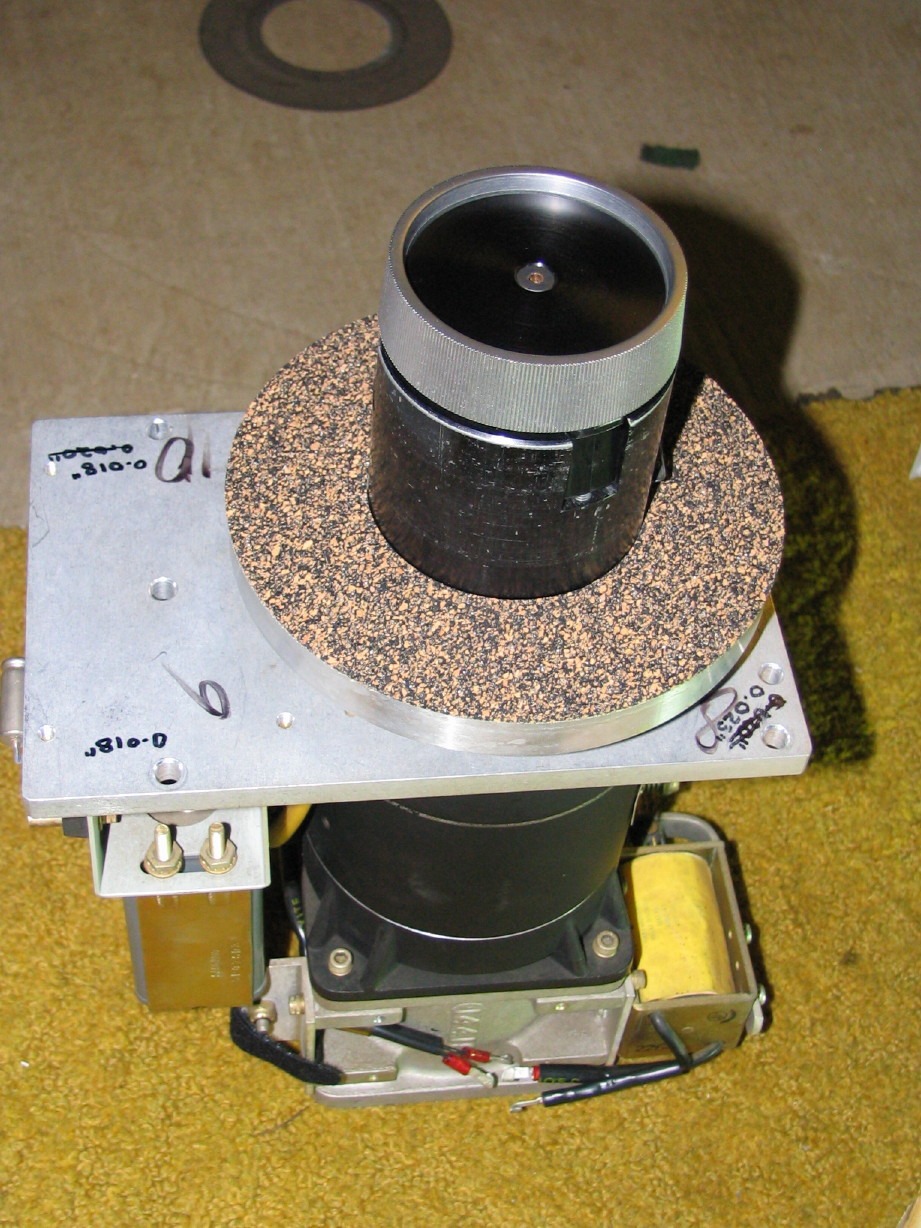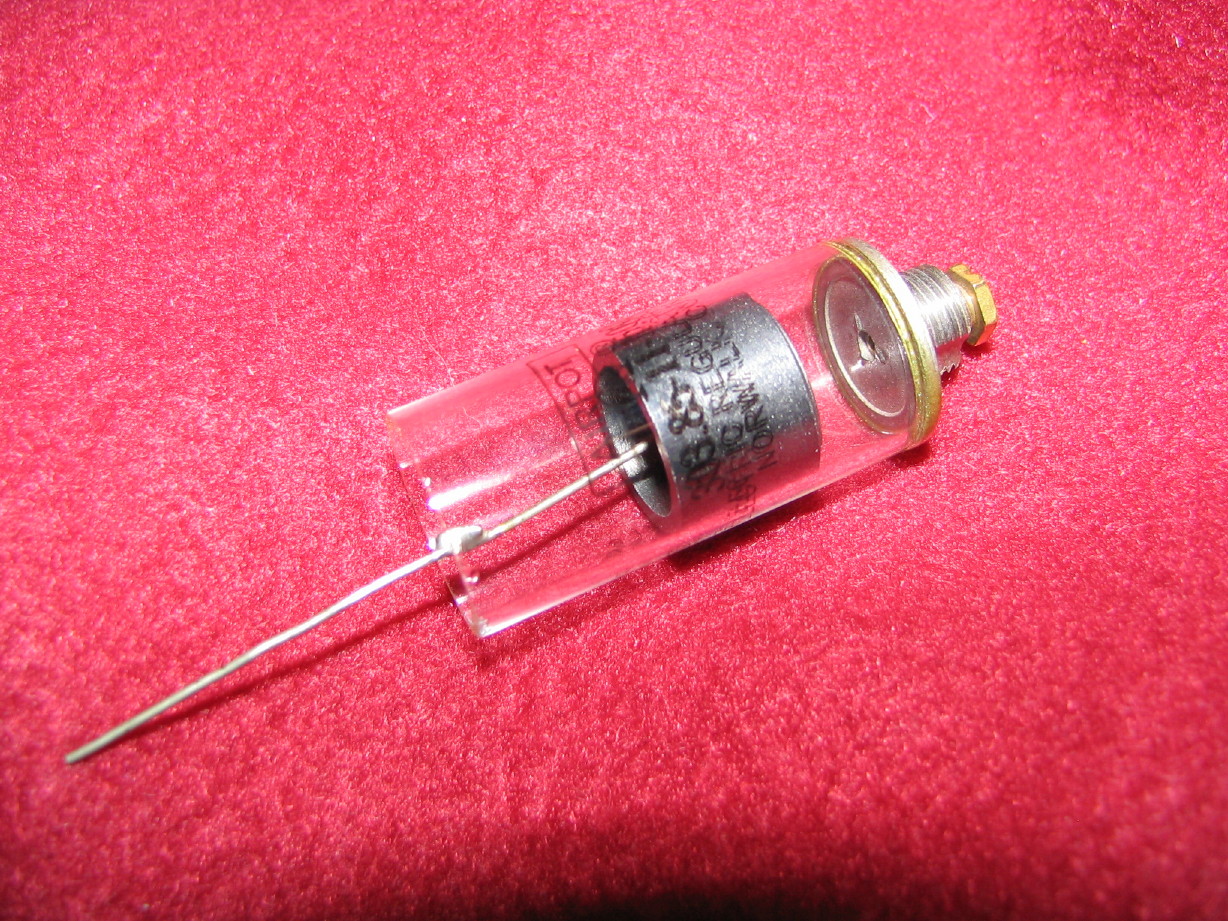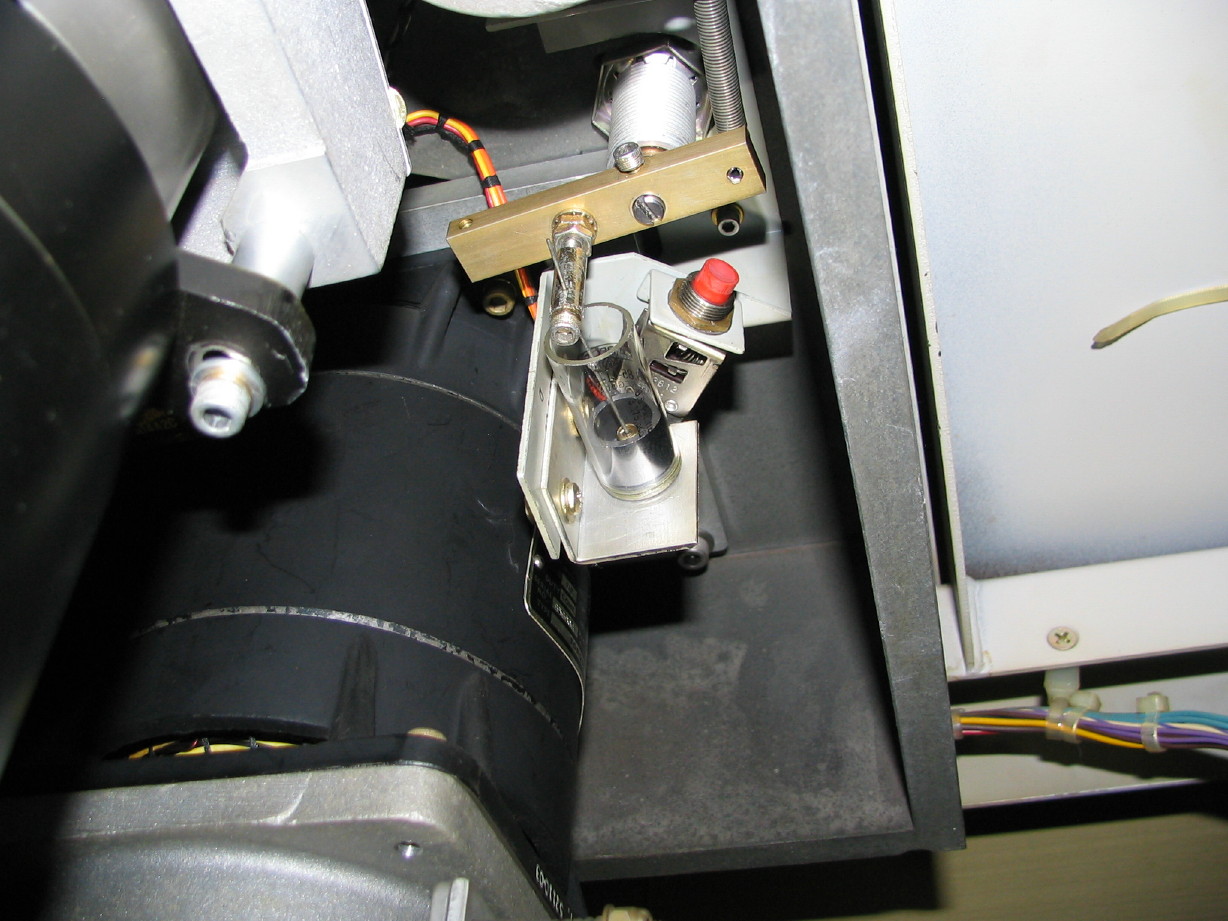I got everything reinstalled that had to come out in order to get the takeup motor out for the reel cork replacement procedure. This is a bit of a chore just because I have to work upside-down. On a "normal" sized deck I could turn it the way I want in order to gain best access, but of course Matilda sits how she wants and I have to reorient my body...reminiscent of working behind the dash on my wife's VW Rabbit, laying upside-down in the driver's seat with my head down by the pedals. Anyway...
So I got all that stuff back in and I've removed everything in order to gain easy egress for the
supply motor. Perfect example of sweetbeats' OCD. See, I
could just leave the motor in, pull the old cork off and clean it up with acetone, put the new cork on and be done with it but when I pulled the reel clamper off the takeup table there was a small pile of aluminum shavings in there. I have a feeling there may have been mechanical failure at some point causing a reel to keep spinning on the table and there is a spring-loaded tab on the reel clamper core that could scrape on one of the adapter donuts used when running the machine as a 1". Anyway, I just can't stand the thought that there might be aluminum flakes inside the supply clamper assembly and you can't get to the bolts that hold the clamper on unless you remove the motor. Plus the bolts that held the clamper to the takeup table weren't all that tight and I'd feel better getting the supply-side properly torqued. ANYway (yet again...)...
I just need to remove the 4 bolts that hold the supply motor assembly to the deck plate and drop it down. One of the items that I removed was the motion sensor assembly...Its the smaller cylindrical assembly at the bottom of the motor assembly stack:
I pulled it just to shorten the stack up...make it easier to manipulate out of the console and also, with it removed, the stack sits very nicely on the brake housing. Well, remember that the supply motor is the one where I can't figure out why the brake isn't working, but I know it is a mechanical issue...I now know what the issue is...check this out...when I dropped the motion sensor assembly down the brake pad was sitting on top of the sensor bracket:
See, this is the stuff I love to discover. I bet that brake has been non-functional for years and nobody could figure out why or
cared, but it is such a simple fix. I believe I can just remove the brake band, clean everything up really good and use contact cement to re-adhere the pad to the band...problem solved. I'm sure having that brake non-functional has wreaked havoc on the operation of the machine.
The
other thing I discovered when I pulled the motion sensor assembly is that the micro-switch that wasn't actuating (you may recall...the one that I could see wasn't working and then noticed that part of it seemed missing and then I saw, much to my relief, the little metal 'U'-shaped piece that completes the micro-switch linkage perched on the sensor bracket under the switch) is not only missing part of its linkage but (duh) now that I can see both switches at varying angles I see the switch with the impaired linkage is actually *busted*...missing, like, half its shell. It would probably still work but I gotta find a replacement. If the switch threw its linkage at the wrong time it could cause tape to snap so...here's hoping. It appears to be a standard part and actually I'm sure there are a number of switches that will work but I hope to find a direct replacement. Here's a closeup shot of the broken switch...you can see its healthy twin to its right...makes you wonder what happened...:
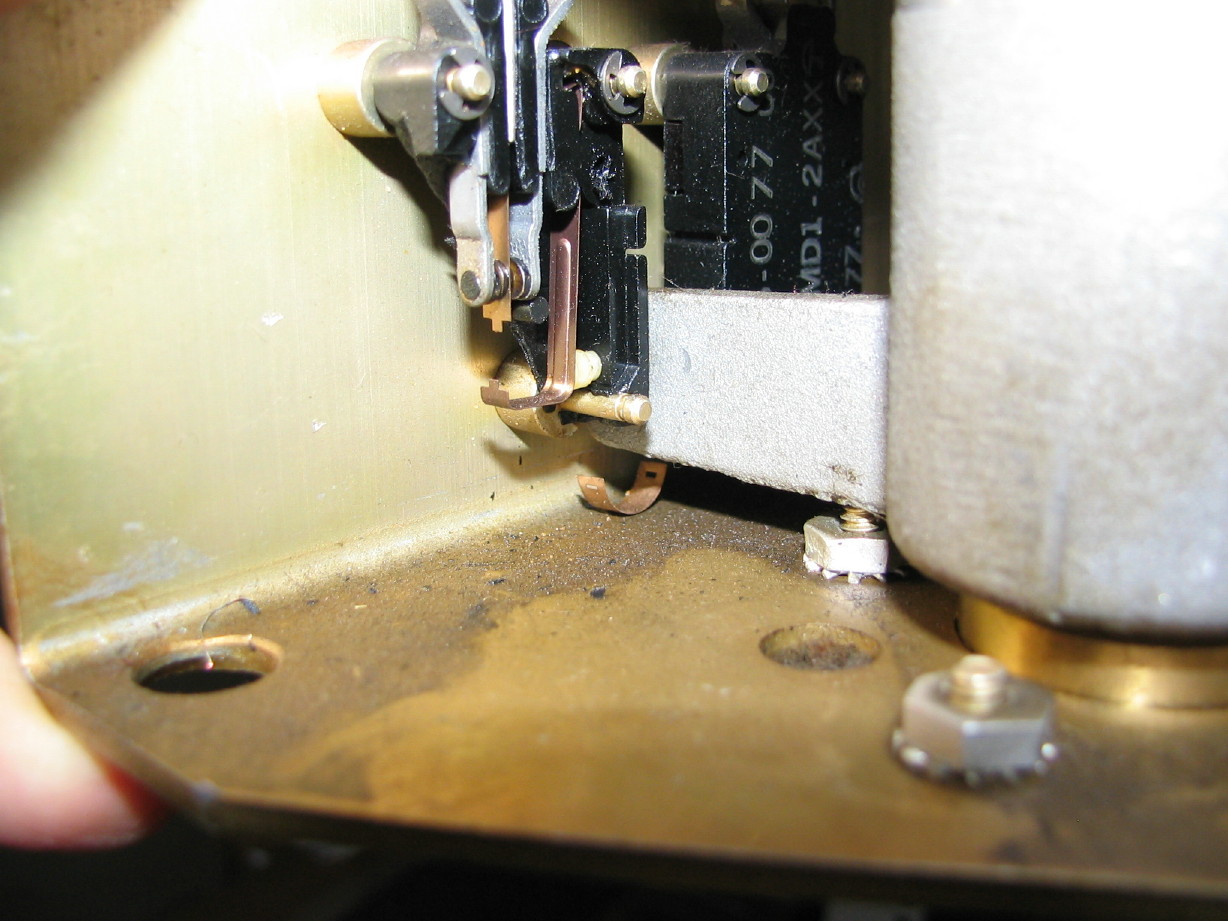
Now, I just have to say, that the whole motion sensor assembly is
the most aggregious example of over-engineering I have yet to find, which is kind of scary because the machine is dripping with over-engineering, but watch this short YouTube video and maybe you'll understand why I feel that way:
YouTube
Last but not least I am in the midst of cleaning up the "breaker panel"...that's the power switch, but it is an actual 15A single-pole breaker mounted on a 2U rack panel that mounts on the lower right of the console. There are +120VAC and COM buss bars mounted behind the panel too. Just taking that all apart, getting all the dust and scunge off of it and cleaning all the contacts good.
So, next up, I'll drop the supply motor down, clean up the reel table, put the new cork on, fix the brake band and try to find a replacement switch for the motion sensor.








